A short piece on the process for USPS stamp design and how you can submit your artwork for consideration. “On average we allow about three years from the time we begin work on a stamp until the time it’s issued.”



This site is made possible by member support. ❤️
Big thanks to Arcustech for hosting the site and offering amazing tech support.
When you buy through links on kottke.org, I may earn an affiliate commission. Thanks for supporting the site!
kottke.org. home of fine hypertext products since 1998.
Entries for March 2023
Restoring a 100-Year-Old Animated Film
You’ve probably seen the work of animation pioneer Max Fleischer; he made the old Popeye, Superman, Betty Boop, and Koko the Clown cartoons waaaay back in the early-to-mid 20th century. Films from back then are often not well-preserved, so when a copy is discovered in a film library or private collection, great care must be exercised in restoring the film for future generations to enjoy.
This video follows the restoration process of Fleischer’s 1924 Koko the Clown film Birthday, from scanning a 35mm print from 1930 to the digital retouching. The fully restored print doesn’t seem to be online anywhere, but you can see a couple of before-and-after comparisons here and here.
These maps provide graphic evidence of how parking lots “eat” U.S. cities. “On average, parking lots gobble up 20% of prime locations in U.S. city centers.”
Most Touched, a book featuring over 1000 different kinds of door handles from around the world.
They’re doing a sequel to cult-favorite Scott Pilgrim vs the World with the original cast and it’s anime.
A new study shows that “horses were ridden and raised by [North American] Indigenous groups by the early 1600s”, much sooner than previous studies have shown and more in line with the oral histories of Indigenous tribes.
The Beautiful Skyscrapers of Early 20th Century America



Using drones, a team led by photographer Chris Hytha has been traveling around the country capturing images of the tops of some of America’s most beautiful and notable early 20th century skyscrapers.
The prosperity of early 20th century America resulted in a boom of skyscrapers that still tower over cities across the country today. Focusing on the character and craftsmanship on display at the top of these landmark buildings in a way that can’t be seen from street level, the Highrises Collection reveals fascinating details and stories of these distinctly American icons.
They’ve done almost a hundred of them so far and are planning on adding about 100 more to the tally before they are finished. Hytha recently shared some of his favorite Art Deco buildings from the project. (via @mwilkie)
“What if the “decline” of men’s ambition is just less unquestioned access to power and privilege? […] Men don’t need ambition. They have privilege. They rise unless they work hard at sucking.”
A collective of 73 natural history museums in 28 countries has created a vast inventory of the 1.1 billion objects in their collections, in order to answer questions like “how quickly species are becoming extinct and how climate change is altering the natural world”.
Donald Trump was indicted by a Manhattan grand jury today. “In the coming days, prosecutors working for the district attorney, Alvin L. Bragg, will likely ask Mr. Trump to surrender and to face arraignment.”
What if stars had phone-like battery indicators for how much hydrogen fuel they have left? The Sun is at about 50% battery while Betelgeuse is about out of juice and needs to find an outlet.
The Undeniable Street View, a site that shows before-and-after views of civilian areas in Ukrainian cities that have been devastated by the Russian invasion.
How Noiseless Props Are Made For Movies And TV Shows
Insider has been doing a whole series of videos on how movie props are made (view the entire thing here) and I found this one on how prop makers rely on noiseless props to be particularly interesting. To cut down on distracting on-set noise (so dialogue can be heard, for instance), they swap racquetball balls for pool balls, silicon chunks for ice cubes, and paper bags made out of coffee filter material for real paper bags. So weird to watch those objects in action without their usual sounds. (thx, caroline)
Tapping the Vast Renewable Energy of the Yellowstone Supervolcano

The first few sentences of the abstract for this paper from the scientific journal Renewable Energy contain a twist in the middle that’s worthy of M. Night Shyamalan:
The USA is confronted with three epic-size problems: (1) the need for production of energy on a scale that meets the current and future needs of the nation, (2) the need to confront the climate crisis head-on by only producing renewable, green energy, that is 100% emission-free, and (3) the need to forever forestall the eruption of the Yellowstone Supervolcano. This paper offers both a provable practical, novel solution, and a thought experiment, to simultaneously solve all of the above stated problems.
If you don’t know about the supervolcano lurking under Yellowstone National Park, now’s your chance to learn more. Here’s Bill Bryson from his book A Short History of Nearly Everything:
Yellowstone, it turns out, is a supervolcano. It sits on top of an enormous hot spot, a reservoir of molten rock that rises from at least 125 miles down in the Earth. The heat from the hot spot is what powers all of Yellowstone’s vents, geysers, hot springs, and popping mud pots. Beneath the surface is a magma chamber that is about forty-five miles across — roughly the same dimensions as the park — and about eight miles thick at its thickest point. Imagine a pile of TNT about the size of Rhode Island and reaching eight miles into the sky, to about the height of the highest cirrus clouds, and you have some idea of what visitors to Yellowstone are shuffling around on top of. The pressure that such a pool of magma exerts on the crust above has lifted Yellowstone and about three hundred miles of surrounding territory about 1,700 feet higher than they would otherwise be. If it blew, the cataclysm is pretty well beyond imagining. According to Professor Bill McGuire of University College London, “you wouldn’t be able to get within a thousand kilometers of it” while it was erupting. The consequences that followed would be even worse.
Back to the paper. The authors are proposing to generate massive amounts of energy from the supervolcano — “well over 11 Quadrillion Watt hours of electrical energy” per year:
Through a new copper-based engineering approach on an unprecedented scale, this paper proposes a safe means to draw up the mighty energy reserve of the Yellowstone Supervolcano from within the Earth, to superheat steam for spinning turbines at sufficient speed and on a sufficient scale, in order to power the entire USA. The proposed, single, multi-redundant facility utilizes the star topology in a grid array pattern to accomplish this. Over time, bleed-off of sufficient energy could potentially forestall this Supervolcano from ever erupting again.
I mean, this actually sounds like a great idea if it could be done safely, without ruining the park and, you know, accidentally blowing shit up. As of 2016, Iceland generated 65% of its energy from geothermal sources — the US could certainly stand to lean more on geothermal.
If you needed to write a headline summing up contemporary American culture, it might read something like this: People Who Caused Traffic Nightmare At Pretty Tree Festival Complain Of Traffic Nightmare At Pretty Tree Festival.
Not happy with the “insanely broad” language in the RESTRICT bill (aka the TikTok ban bill) - this feels like the Patriot Act all over again. Pass individual privacy protection legislation instead!
The Impressionish Painter
I have to admit that as much as I love Evan Puschak’s Nerdwriter videos, I did not have high hopes for his latest video on John Singer Sargent, a painter I didn’t know a lot about and assumed, mostly based on his name (ugh, I know), that he was some fusty 19th-century painter who was not as interesting as the Impressionists. What a pleasant surprise to discover, right from Puschak’s expertly concise show-don’t-tell opening, that I am Sargent’s newest fan.
Everywhere you look in this painting you see his supremely confident looseness, a kind of painting you maybe wouldn’t think to associate with a realistic representation of the world. And yet that’s exactly the final effect — a realism that is somehow more true than finely detailed painting.
Realism through impressionism? Sign me up. Stay curious, friends…you never know what interesting new (or old!) thing you’re going to discover next.
Pop-Up Magazine is doing three more live shows for their farewell tour: in Brooklyn, Oakland, and LA.
Happy 10th Anniversary to Kurzgesagt
This year, Kurzgesagt celebrates 10 years of making videos on YouTube and to mark the occasion, they’ve produced this video about their history, how their business works (their shop accounts for a large chunk of their revenue), and the values that guide their work.
Kurzgesagt’s foundation was laid when Philipp, our founder, dropped out of high school as a teenager. Learning seemed daft and useless and he was not interested in anything. Until a very special teacher at a school for dropouts grabbed him by the neck. The way she taught was different. She talked about connections and the big picture. She told a story. For the first time ever, Philipp wanted to learn more without being forced. It was a key life experience.
Kurzgesagt tries to recreate this experience for you. “Nothing is boring if you tell a good story, and we try to tell these stories to spark excitement and make you want to go on and learn more. Because of the one teacher that could do this, Philipp got a high school degree, studied history and design and eventually started Kurzgesagt as a passion project, inspired by Crash Course World history.
Some of you might not be interested in something that seems pretty inside baseball, but I post a lot of Kurzgesagt’s videos here and I’ve always admired the way they go about their business — their commitment to quality, painstaking research, an ability to admit when they got it wrong, non-extractive revenue streams with a heavy emphasis on direct reader support — and it was great to hear them talk about it.
The professor of food history at the University of Parma: “the recipe for carbonara is American and the only place in the world to find bona fide parmesan cheese nowadays is Wisconsin”. Spicy!
It’s Not the Bike Lane’s Fault You’re a Bad Driver. “Pay attention to the fucking road while you’re driving. It’s not too much to ask when other people’s lives are literally at stake.”
Ooh, a new book by Lauren Groff is coming out in the fall: The Vaster Wilds. I loved her previous book, Matrix.
ChatGPT Made Me Cry and Other Adventures in AI Land

[Yesterday I spent all day answering reader questions for the inaugural Kottke.org Ask Me Anything. One of them asked my opinion of the current crop of AI tools and I thought it was worth reprinting the whole thing here. -j]
Q: I would love to know your thoughts on AI, and specifically the ones that threaten us writers. I know you’ve touched on it in the past, but it seems like ChatGPT and the like really exploded while you were on sabbatical. Like, you left and the world was one way, and when you returned, it was very different. —Gregor
A: I got several questions about AI and I haven’t written anything about my experience with it on the site, so here we go. Let’s start with two facts:
- ChatGPT moved me to tears.
- I built this AMA site with the assistance of ChatGPT. (Or was it the other way around?)
Ok, the first thing. Last month, my son skied at a competition out in Montana. He’d (somewhat inexplicably) struggled earlier in the season at comps, which was tough for him to go through and for us as parents to watch. How much do we let him figure out on his own vs. how much support/guidance do we give him? This Montana comp was his last chance to get out there and show his skills. I was here in VT, so I texted him my usual “Good luck! Stomp it!” message the morning of the comp. But I happened to be futzing around with ChatGPT at the time (the GPT-3.5 model) and thought, you know, let’s punch this up a little bit. So I asked ChatGPT to write a good luck poem for a skier competing at a freeski competition at Big Sky.
In response, it wrote a perfectly serviceable 12-line poem with three couplets that was on topic, made narrative sense, and rhymed. And when I read the last line, I burst into tears. So does that make ChatGPT a soulful poet of rare ability? No. I’ve thought a lot about this and here’s what I think is going on: I was primed for an emotional response (because my son was struggling with something really important to him, because I was feeling anxious for him, because he was doing something potentially dangerous, because I haven’t seen him too much this winter) and ChatGPT used the language and methods of thousands of years of writing to deliver something a) about someone I love, and b) in the form of a poem (which is often an emotionally charged form) — both of which I had explicitly asked for. When you’re really in your feelings, even the worst movie or the cheesiest song can resonate with you and move you — just the tiniest bit of narrative and sentiment can send you over the edge. ChatGPT didn’t really make me cry…I did.
But still. Even so. It felt a little magical when it happened.
Now for the second part. I would say ChatGPT (mostly the new GPT-4 model), with a lot of hand-holding and cajoling from me, wrote 60-70% of the code (PHP, Javascript, CSS, SQL) for this AMA site. And we easily did it in a third of the time it would have taken me by myself, without having to look something up on Stack Overflow every four minutes or endlessly consulting CSS and PHP reference guides or tediously writing tests, etc. etc. etc. In fact, I never would have even embarked on building this little site-let had ChatGPT not existed…I would have done something much simpler and more manual instead. And it was a *blast*. I had so much fun and learned so much along the way.
I’ve also been using ChatGPT for some other programming projects — we whipped the Quick Links into better shape (it can write Movable Type templating code…really!) and set up direct posting of the site’s links to Facebook via the API rather than through Zapier (saving me $20/mo in the process). It has really turbo-charged my ability to get shit done around here and has me thinking about all sorts of possibilities.
I keep using the word “we” here because coding with ChatGPT — and this is where it starts to feel weird in an uncanny valley sort of way — feels like a genuine creative collaboration. It feels like there is a “someone” on the other side of that chat, a something that’s really capable but also needs a lot of hand-holding. Just. Like. Me. There’s a back and forth. We both screw up and take turns correcting each other’s mistakes. I ask it please and tell it thank you. ChatGPT lies to me; I gently and non-judgmentally guide it in a more constructive direction (as you would with a toddler). It is the fucking craziest weirdest thing and I don’t really know how to think about it.
There have only been a few occasions in my life when I’ve used or seen some new technology that felt like magic. The first time I wrote & ran a simple BASIC program on a computer. The first time I used the web. The first time using a laptop with wifi. The first time using an iPhone. Programming with ChatGPT over the past few weeks has felt like magic in the same way. While working on these projects with ChatGPT, I can’t wait to get out of bed in the morning to pick up where we left off last night (likely too late last night), a feeling I honestly have not consistently felt about work in a long time. I feel giddy. I feel POWERFUL.
That powerful feeling makes me uneasy. We shouldn’t feel so suddenly powerful without pausing to interrogate where that power comes from, who ultimately wields it, and who it will benefit and harm. The issues around these tools are complex & far-reaching and I’m still struggling to figure out what to think about it all. I’m persuaded by arguments that these tools offer an almost unprecedented opportunity for “helping humans be creative and express themselves” and that machine/human collaboration can deepen our understanding and appreciation of the world around us (as has happened with chess and go). I’m also persuaded by Ted Chiang’s assertion that our fears of AI are actually about capitalism — and we’ve got a lot to fear from capitalism when it comes to these tools, particularly given the present dysfunction of US politics. There is just so much potential power here and many people out there don’t feel uneasy about wielding it — and they will do what they want without regard for the rest of us. That’s pretty scary.
Powerful, weird, scary, uncanny, giddy — how the hell do we collectively navigate all that?
(Note: ChatGPT didn’t write any of this, nor has it written anything else on kottke.org. I used it once while writing a post a few weeks ago, basically as a smart thesaurus to suggest adjectives related to a topic. I’ll let you know if/when that changes — I expect it will not for quite some time, if ever. Even in the age of Ikea, there’s still plenty of handcrafted furniture makers around and in the same way, I suspect the future availability of cheap good-enough AI writing/curation will likely increase the demand and value for human-produced goods.)
Apple Passwords Deserve An App. Apple has a cross-platform password manager with great features but it’s hidden away behind “weird little Settings panels”.
The EU all but bans new sales of cars with internal combustion engines by 2035. “Countries in the European Union have approved a landmark law that will ensure all new cars sold from 2035 must have zero emissions.”
Fantastic interactive piece on the physics of how bicycles work. You will 100% know what forces and torque are by the end of this.
David Friedman suspects that someone used an AI chat bot to write one of the finalist captions for the New Yorker’s cartoon caption contest. “They’re not looking for the exit, they’re looking for meaning.”
Wes Anderson’s Asteroid City
The top two comments on YouTube sum this trailer for Asteroid City up pretty well: “Just when you don’t think it can get more Wes Anderson, it gets more Wes Anderson.” and “You know a Wes Anderson movie is a Wes Anderson movie, but you can’t really describe a Wes Anderson movie to someone who has never seen a Wes Anderson movie.” Here’s the synopsis:
The itinerary of a Junior Stargazer/Space Cadet convention (organized to bring together students and parents from across the country for fellowship and scholarly competition) is spectacularly disrupted by world-changing events.
Does it even matter to know this? At this point, you’re either throwing money at the screen after watching this trailer (*raises hand*) or you’re just not interested. For those in the former camp, Asteroid City opens in theaters on June 16.
Update: Asteroid City marks the first Wes Anderson movie without Bill Murray since Bottle Rocket — the actor came down with Covid-19 just before filming began and had to withdraw.
The Kottke.org Ask Me Anything
Last month, I put out a call for readers to ask me anything — “questions about the sabbatical, media diets, 25 years of blogging, membership stuff, editorial policies, my fiddle leaf fig, Mastodon, parenting, Fortnite, etc.” I meant to start answering these sooner, but I ended up getting so any questions (over 330 of them!) that I decided to go a little overboard and build a little site to host the questions and answers.
I’ll be spending the entire day today answering questions over there, so check it out now and then come back later for more. You can favorite posts to help others discover what the collective readership thinks are the best ones. Here’s one of the questions I’ve answered so far:
Q: What’s the reader profile you have in your mind when you write? Are you thinking about someone or some kind of person specifically? I’m a 37 year old lawyer who can’t even remember how I first came across your blog. I’ve read for 10+ years and have always sort of wondered if you had a sense of the breadth of people who read your blog. I don’t necessarily fit neatly within any of the topics you focus on but always learn something when I dip in. - Garo
A: The site is best when I try to write posts as if each one is an email to a curious friend who I think would be interested in the thing I’m writing about, irrespective of topic/subject/field/whatever. I know not everyone is interested in every topic (or even most topics!) but I tend to look for things that people might find intriguing even if they don’t normally collect stamps, skateboard, watch ballet, appreciate mathematics, or listen to rap. Anything is interesting if you dig deep enough, observe it from the correct angle, or talk to the right enthusiast.
How Two Jewish Kids in 1930s Cleveland Altered the Course of American Pop Culture. “The two spent the whole day — without taking a break, eating sandwiches that Joe brought in — creating Superman.”
Pemmican: History’s Power Bar
From Max Miller’s informative & entertaining YouTube channel Tasting History comes this lesson on pemmican, a mixture of meat and fat/tallow that was invented by the indigenous peoples of North America. Pemmican’s main attributes are its shelf-life (years), portability, and nutritional value, making it an ideal “power bar” to be taken on expeditions or long ship voyages.
See also Miller’s videos on hardtack. (via open culture)
Explainer on the “biggest protest movement in Israeli history”. The right-wing govt wants “full annexation of the occupied West Bank, a rollback of pro-LGBTQ+ legislation, axing laws protecting women’s rights and minority rights…”
Henri Cartier-Bresson’s Forgotten Photographs of New Jersey
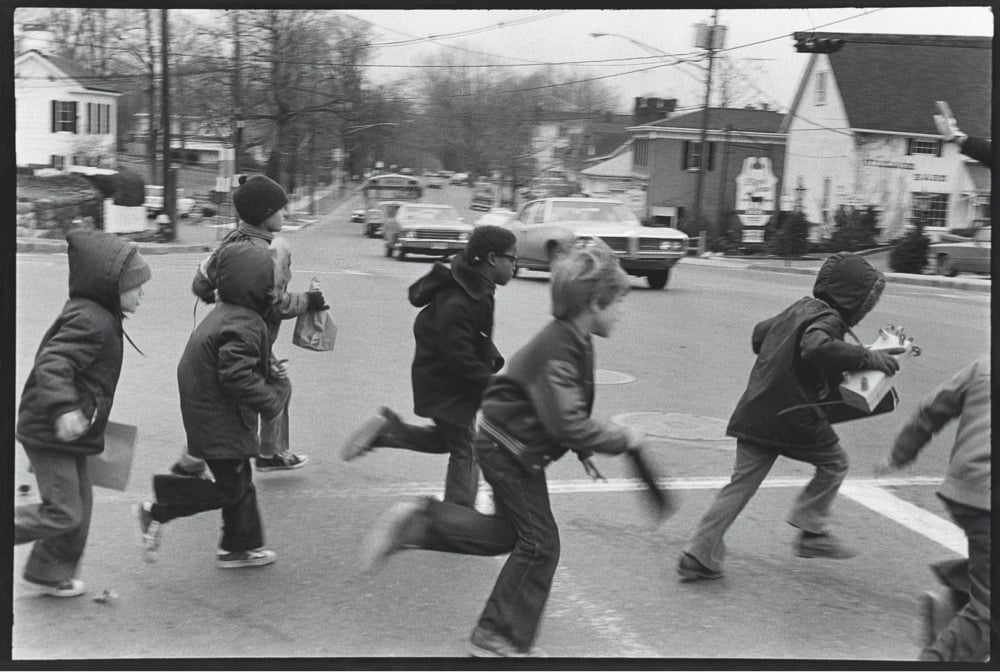

In 1975, famed French photographer Henri Cartier-Bresson traveled, at the behest of a public television station, to the US to take photographs of New Jersey.
The photographer felt that New Jersey’s anywhere-ness, its density and diversity, was “a kind of shortcut through America.” With that prompt, Evans assembled an itinerary. Cunningham picked up Cartier-Bresson in Manhattan around sunrise each day for three weeks and headed for the bridges and tunnels. They embedded with ambulance drivers in Newark and chicken farmers in West Orange. They visited suburban sprawl, horse country, pine barrens, swamps, seashore, beauty parlors, labs, nuclear facilities, jails, mansions. They once stayed overnight in a South Jersey motel, and Cartier-Bresson insisted that they flip a coin to determine who got the bed.
It was one of his final photo projects and because his photos were cropped for use on television (“a practice Cartier-Bresson viewed as sacrilege”), the project was not included in most catalogues of his work and was almost forgotten.
You can watch the resulting TV program from 1975 at the American Archive of Public Broadcasting.
“Why is every action hero named Jack, John, James, or, occasionally, Jason?”
Everything Is a Remix
Kirby Ferguson has released the final and “definitive” full-length version of his fantastic Everything is a Remix video series (transcript).
Memes are remixing. You take a photo, you repurpose it, then someone else tries it, then there’s a flood of everyone trying out combinations, including remixing other memes.
When you take something old and use it in something new, that’s remixing. It might just seem like just copying, but it’s actually something much more. Remixing can empower you be more creative.
Remixing allows us to make music without playing instruments, to create software without coding, to create bigger and more complex ideas out of smaller and simpler ideas.
You don’t need expensive tools to remix, you don’t need a distributor, you don’t even need skills or… good judgment. Everybody can remix and everybody does.
From our songs and games and movies and memes, to how we train computers to create, to the way we sense of reality, to the evolution of life itself, everything is definitely a remix.
(via matt haughey)
Fantastic edition of Jodi Ettenberg’s Curious About Everything newsletter. So happy she’s been able to keep this going while confined to bed with a spinal CSF leak.
From 2010 to 2021, the average range of electric vehicles sold globally has almost tripled (from 80 miles to 220 miles).
A Diorama of Michael Jackson on Fire
I…. Hmm. I really don’t know how to describe this video. Bobby Fingers, who seems to be a professional model maker of some sort (who can also sing and dance?), made a diorama of when Michael Jackson’s hair caught on fire during the filming of a Pepsi commercial (which, weirdly, occurred almost exactly halfway through Jackson’s life). It’s quietly and surreally hilarious — I absolutely lost it when the horse poop made an abrupt-but-relevant appearance. I don’t know what else to say…just watch it. Thank god the internet can still be weird. (thx, tim & clarke)
With three major new rules this year (“the pitch clock, a ban on the infield shift and limits on pickoff throws”), MLB hopes to speed the game up and to showcase the players’ athleticism more effectively.
This recently rediscovered and deciphered stone slab is the oldest map of Europe “for which we can identify the territory it depicts”. It’s around 4000 years old and depicts (in 3D!) an area in Brittany, France.
An old favorite link of mine: “This is my personal account of curing my asthma and hayfever by deliberately infesting myself with the intestinal parasite hookworm.”
Book Publishers Won’t Stop Until Libraries Are Dead. In our current world where all views of media must be tracked and paid for, libraries are dangerous and media companies will kill them if we let them.
The Everlasting Storm in the “Most Electric Place on Earth”
Almost 300 days out of every year, there are thunderstorms over Venezuela’s Lake Maracaibo. Called Catatumbo lightning — “Catatumbo means ‘House of Thunder’ in the language of the local Barí people” — the phenomenon is caused by the unique confluence of warm air and water from the Caribbean Sea with the cold air flowing down from the Andes, which nearly surround the lake. The result is near-nightly storms with the world’s highest density of lightning and up to 200 flashes in a minute. It sounds, literally, awe-some.
The short video above is a profile of photographer Jonas Piontek, who has captured some amazing photos and video of the Catatumbo lightning. The NY Times featured some of his photos in this piece about the lightning.
Less than half an hour after the first cloud forms, it starts to flash. It does this faster and faster - 200 flashes a minute is not uncommon. After that, the cloud becomes a giant bulb that lights up the night.
“You can read a newspaper in the middle of the night because it’s so bright,” said Jonas Pointek, a photographer who has documented the storms.
(via open culture)
From the Brennan Center for Justice, A Proposal to Reduce Unnecessary Incarceration. “The federal government must reorient its grant spending to press states to end punitive policies that fail to deliver public safety.”
The origin story of Ted Lasso - the character didn’t originate with those NBC commercials in 2013 but much earlier in an Amsterdam comedy club.
The Assassin’s Teapot
The assassin’s teapot is certainly an eye-catching name for pottery, but there’s also an interesting bit of physics going on here. The teapot in question has two separate chambers for holding liquid, and the flow out of the pot from each chamber can be controlled by covering or uncovering small holes located on the handle. So, as the legend goes, a would-be assassin could pour themselves a perfectly fine drink from one chamber and then pour a poisoned drink to their prey from the other chamber, just by discreetly covering and uncovering the proper holes with their fingers. As the video explains, the mechanism here has to do with surface tension and air pressure.
You can get your own assassin’s teapot right here.
An appreciation of the data visualization & information design of the Dark Sky weather app, esp when you compare it to the Apple Weather app.
Plastic Scrimshaw
For an exhibition entitled DEATH TO THE LIVING, Long Live Trash now on view at the Brooklyn Museum, artist Duke Riley takes trash that he’s collected on the beach and turns it into art — think mosaics made from bottle caps, bread bag clips, and tampon applicators. But his plastic scrimshaw creations are absolute genius:


Scrimshaw art was made by whalers in the 19th century by carving designs into the teeth, bones, and baleen of whales. Riley has cleverly adopted the practice using aesthetically similar white plastics, producing a series he calls the Poly S. Tyrene Maritime Museum. The NY Times:
As whalers often depicted the leaders and profiteers of their day, Riley portrays the C.E.O.s of chemical companies, plastic industry lobbyists and others he deems responsible for producing the devastating tonnages of single-use plastics that are engulfing our oceans and threatening our ecosystems. It’s a downer, but if you look closely there’s often a Riley twist of humor, like the seagull shown relieving itself on the head of a water bottle magnate.
You can see a few more of the plastic scrimshaw objects on the Brooklyn Museum’s Tumblr,at Atlas Obscura, and in-person at the Brooklyn Museum until mid-April. (thx caroline)
Legendary record producer Steve Albini on the B-52’s 1980 SNL performance of Rock Lobster. “What an incredible band. Everything about them is minimal and immediate.” Be sure to watch the video; it’s great.
This is unfortunate: a Holocaust-themed video game depicted in Tomorrow, and Tomorrow, and Tomorrow includes many similar elements to Brenda Romero’s game Train. “A theme in the book is how women struggle to get credit for their work.”
For over 100 years, the NY Times’ logo included a period - like so: “The New York Times.” - until it was dropped in the 60s. “Dropping the period caused much consternation and soul-searching at the Times…”
The Sun, In All Its Glory


Good morning, sunshines! Well, amateur astrophotographer Andrew McCarthy has done it again. Collaborating with Jason Guenzel, he has produced this absolutely gobsmacking image of the Sun.
The aptly named “Fusion of Helios” is a fusion from the minds of two astrophotographers, Andrew McCarthy and Jason Guenzel. Using a custom-modified hydrogen alpha solar telescope, the combined data from over 90,000 individual images was jointly processed to reveal the layers of intricate details within the solar chromosphere. A geometrically altered image of the 2017 eclipse as an artistic element in this composition to display an otherwise invisible structure. Great care was taken to align the two atmospheric layers in a scientifically plausible way using NASA’s SOHO data as a reference.
I’ve included the full image and my favorite crop (the solar tornado the height of 14 Earths was a close second) above, but do yourself a big favor and check out the largest image available (which is still way smaller than the 140 megapixel final image they produced). If you’re curious about the process, here’s how McCarthy gets his Sun photos:
So how do I resolve atmospheric details, like spicules, prominences, and filaments? The trick is tuning the telescope to an emission line where these objects aren’t drown out by the bright photosphere. Specifically, I’m shooting in the Hydrogen-alpha band of the visible spectrum (656.28nm). Hydrogen Alpha (HA) filters are common in astrophotography, but just adding one to your already filtered telescope will just reduce the sun’s light to a dim pink disk, and using it without the aperture filter we use to observe the details on the photosphere will blind you by not filtering enough light. If you just stack filters, you still can’t see details. So what’s the solution?
A series of precisely-manufactured filters that can be tuned to the appropriate emission line, built right into the telescope’s image train does the trick! While scopes built for this purpose do exist (look up “coronado solarmax” or “lunt solar telescope” I employ a heat-tuned hydrogen alpha filter (daystar quark) with an energy rejection filter (ERF) on a simple 5” doublet refractor. That gives me a details up close look at our sun’s atmosphere SAFELY. I’ve made a few custom modifications that have helped me produce a more seamless final image, but am not *quite* yet ready to share them, but just the ERF+Quark on a refractor will get you great views.
Photography has always been a combination of technology, artistry, and wrangling whatever light you can get to best express the feeling that you’re going for — astrophotography certainly dials that wrangling up to 11.
Prints of this image (and some digital downloads) are available in various sizes from McCarthy and Guenzel.
The Humbling Tyranny Of The Photos Our Kids Take Of Us. “These pictures remind us that while we study our children, they study us back.”
A Flower a Day
Every day for three years, Iancu Barbarasa drew a flower for his partner and recently he compiled all the drawings into this lovely short film set to Chopin’s Minute Waltz. I loved his acknowledgement of his sources and influences:
Questlove once said that “all creative ideas are derivative of another.” My project would not exist (or at least not in this form) without the influences of: Katsuji Wakisaka, textile designer and founder of Sou·Sou, who has drawn over 10,000 postcards for his wife — Christoph Niemann’s work and also his short film “A Tribute to Maurice Sendak” — “Beyond Noh (Masks of our world)” short film by Patrick Smith — “Plante” short film by Reka Bucsi — and Philippa Perry’s “The Book You Wish Your Parents Had Read (and Your Children Will Be Glad That You Did)”. Last but not least, the end credits are a tribute to Hayao Miyazaki’s wonderful “My Neighbour Totoro” film.
A set of postcards featuring the flower drawings are available from Barbarasa’s shop.
I will also never tire of looking at photos of waves crashing on shore - these from Kevin Krautgartner of O’ahu’s Banzai Pipeline just exude power and complexity.
The Impossible Job of Refereeing
From William Ralston in The Guardian, a long read on “the impossible job” of being a Premier League referee.
No one disputes that referees are as fit as they’ve ever been. The problem, according to many observers, is that referees are also worse than they’ve ever been. In 2017, then-Arsenal manager Arsène Wenger claimed that English referees’ level “drops every season”. The next season, Cardiff manager Neil Warnock despaired at how the “best league in the world” could possibly have “the worst officials”.
Today, that story of perpetual decline has given way to one of full-blown crisis. Every week brings a new wave of anger — from fans, players, managers and pundits — about alleged errors, inconsistencies and incompetence. This is at the polite end of the spectrum. On social media, referees’ mistakes are often blamed not on inevitable human error, or even simple ineptitude, but on elaborate conspiracies to derail this or that club. (The fact that every fanbase believes there is a conspiracy against their particular club does not seem to give people pause.)
There is no statistical evidence to support this story of decline. In fact, all such evidence suggests that referees are making fewer mistakes a match, with accuracy rising each season. (However, these statistics themselves are difficult to assess, given that they are collected not by a truly independent body, but by PGMOL and the Premier League, and very little of this data has ever been made public.) Instead, the critics point to a large, often indisputable, collection of individual errors and baffling decisions. These errors amount to only a tiny percentage of all decisions, but having been replayed and discussed over and over, they are the ones etched into memory.
In season one of his podcast Against the Rules, Michael Lewis explored the disconnect between how referees are perceived and their actual performance, not just in sports but also in governance, business, and even the arts.
There are interesting bits throughout the piece, many of which deal with human psychology (esp. of groups) and even philosophy. I found this bit worth quoting:
On the next day I spent with England, 5 November, he was refereeing the champions, Manchester City, at home to Fulham. In a room at a swanky hotel on the outskirts of Manchester, England and his team gathered for their pre-match meeting. His usual assistants had been replaced, because they support Manchester clubs. (Every official must declare their allegiances, and will not be assigned that team’s matches or those of their closest rivals. Other factors that determine appointments include how many times an official has refereed each club that season, how close they live to the stadium, and which teams their family members support.)
Fascinating! Do any of the sports leagues in the US do this? Or is, as I suspect, the support for one’s team in England just so much more intense and foundational to one’s personal identity than in America?
A Map of Places in the US with the Same Name. “We calculated what place someone is most likely referring to, depending on where they are.” For instance, in most of the country, when you say “Springfield”, people think “Springfield, MA”.
Poverty, By America is a new book by Matthew Desmond in which he argues that a major cause of poverty in the US is because “affluent Americans knowingly and unknowingly keep poor people poor”. Here’s a review in The Atlantic.
A collection of recent photos taken from the International Space Station. I will never get tired of looking at photos of Earth taken from space.
Mattias Adolfsson’s Whimsical Illustrations
I’ve featured the work of Mattias Adolfsson before, but I ran across some of his marvelously dense & vaguely steampunk illustrations again the other day and wanted to point you in his direction once again.
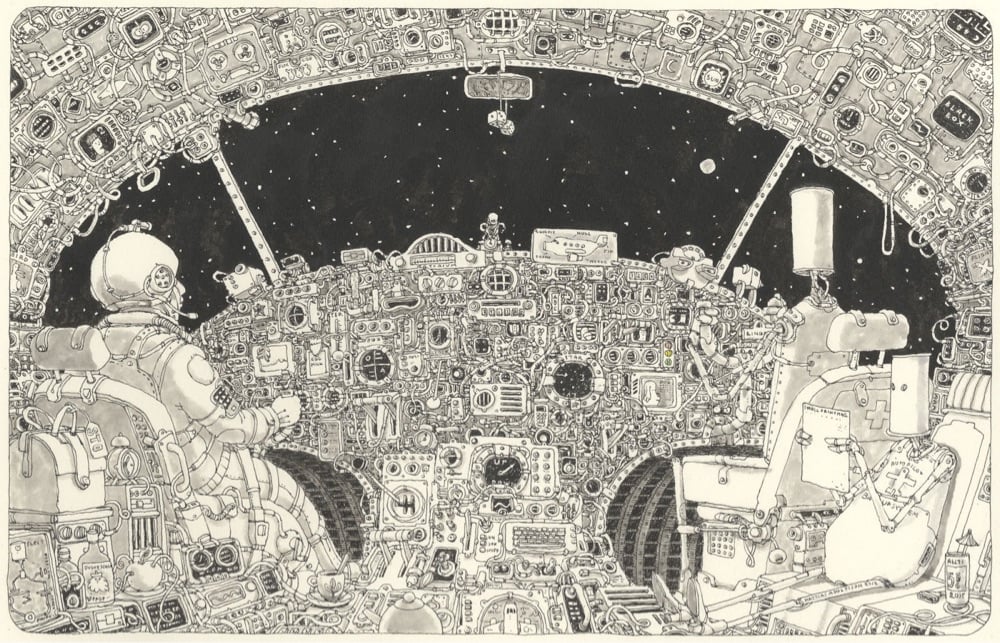


The fantastical & whimsical nature of Adolfsson’s work reminds me of Mark Alan Stamaty, Richard Scarry, Shel Silverstein, and perhaps even a little Quentin Blake and Aardman.
Zoos being closed to visitors during the pandemic gave scientists the opportunity to study how visitor interactions benefitted or harmed the welfare of the animals.
Jurassic Park But With a Cat
I’d seen Titanic with a Cat but hadn’t realized there were a whole collection of videos featuring OwlKitty cleverly edited into them. I really like the Jurassic Park one embedded above. The licking! The purring! Fantastic, no notes.
You can check out a bunch of other movies featuring OwlKitty on YouTube (LOTR, Top Gun, Home Alone, John Wick, Mandalorian), including some behind-the-scenes of how they’re made. Here’s how they did the Jurassic Park one:
The power of at-home filmmaking software and equipment is just incredible.
Oh man, Amazon is shuttering DPReview, effective early next month. I spent a lottttt of time on this site before my phone camera got too good to think about carrying something else.
US maternal mortality is more than 10 times higher than in Australia. “What do we make of a nation that has made giving birth so dangerous - yet forces more and more women to do it?”
Ai Weiwei’s Lego Version of Monet’s Water Lilies


Lego bricks and Impressionism are a natural pairing, and so Chinese artist Ai Weiwei has recreated Claude Monet’s massive Water Lilies triptych with 650,000 Lego bricks. Spanning nearly 50 feet across, the Lego sculpture is part of Ai’s upcoming show at the Design Museum in London. Here is a tantalizing behind-the-scenes view.
Ai has been creating Lego works for years now — including these Warhol-esque portraits and A Sunday on La Grande Jatte — and was even denied from buying bricks from the company at one point.
How Loneliness Reshapes the Brain. Lonely people “tend to end up with a more negative spin on whatever information they receive — facial expressions, texting, whatever — and that drives them even deeper into this loneliness pit.”
A Potential Major Discovery: An Aperiodic Monotile

The authors of a new preprint paper claim that they’ve discovered what’s called an aperiodic monotile, a single shape that can cover a two-dimensional space with a pattern that never repeats itself exactly. One of the authors, Craig Kaplan, explains on Mastodon:
How small can a set of aperiodic tiles be? The first aperiodic set had over 20000 tiles. Subsequent research lowered that number, to sets of size 92, then 6, and then 2 in the form of the famous Penrose tiles.
Penrose’s work dates back to 1974. Since then, others have constructed sets of size 2, but nobody could find an “einstein”: a single shape that tiles the plane aperiodically. Could such a shape even exist?
Taylor and Socolar came close with their hexagonal tile. But that shape requires additional markings or modifications to tile aperiodically, which can’t be encoded purely in its outline.
In a new paper, David Smith, Joseph Myers, Chaim Goodman-Strauss and I prove that a polykite that we call “the hat” is an aperiodic monotile, AKA an einstein. We finally got down to 1!
The full paper is here. You can play around with the tiles here & here and watch an animation of an infinite array of these monotiles.
If you’re looking for a quick explanation of what aperiodic tiling is, check out the first 20 seconds of this video:
This video from Veritasium and this Numberphile one might also be helpful in understanding the concept. (thx, caroline)
Update: Siobhan Roberts wrote a good layperson’s account of the discovery and its import & implications. One of the paper’s authors discovered the hat shape while working with paper shapes:
“It’s always nice to get hands-on,” Mr. Smith said. “It can be quite meditative. And it provides a better understanding of how a shape does or does not tessellate.”
Essential Japanese Cinema: A Journey Through 50 of Japan’s Beautiful, Often Bizarre Films.
This year in Serious Eats’ Starch Madness bracket, rice dishes from around the world go grain-to-grain. Some personal faves: risotto, halal cart chicken & rice, sushi rice, arancini, and broken rice.
Bono and The Edge’s Tiny Desk Concert
The most recognizable half of U2 made the trip to the NPR offices to perform a Tiny Desk Concert recently. Accompanied by the Duke Ellington School of the Arts Choir, the pair sang four songs from their 2000 album All That You Can’t Leave Behind, including Beautiful Day.
See also Tiny Desk Concerts from Alicia Keys, Dua Lipa, Max Richter, Coldplay, and the Sesame Street gang.
Photos of houses completely buried by snow in Mammoth Lakes, CA. If you haven’t been following, more than 65 feet of snow has fallen in the area this winter.
Will Sharpe (Ethan from White Lotus s02) will direct the film adaptation of Michelle Zauner’s Crying in H Mart, which I read last summer and loved.
The latest IPCC report on the climate crisis says it’s the last chance for humanity to keep warming under the critical 1.5°C threshold - “only swift and drastic action can avert irrevocable damage to world”.
Physicist Chien-Shiung Wu produced the first experimental evidence of quantum entanglement in 1949 but faced both sexism and racism in gaining recognition for this and her other achievements. Many scientists believe she should have won a Nobel.
This is lovely: a keyboard visualization of an instrumental piece from Howl’s Moving Castle. The piece is instantly recognizable as Studio Ghibli - Joe Hisaishi “composed the music for nearly all of Ghibli’s films”.
“The Puzzling Gap Between How Old You Are and How Old You Think You Are”
For The Atlantic, Jennifer Senior writes about how and why people’s subjective age — the age you are in your head — differs from their actual age.
But “How old do you feel?” is an altogether different question from “How old are you in your head?” The most inspired paper I read about subjective age, from 2006, asked this of its 1,470 participants — in a Danish population (Denmark being the kind of place where studies like these would happen)-and what the two authors discovered is that adults over 40 perceive themselves to be, on average, about 20 percent younger than their actual age. “We ran this thing, and the data were gorgeous,” says David C. Rubin (75 in real life, 60 in his head), one of the paper’s authors and a psychology and neuroscience professor at Duke University. “It was just all these beautiful, smooth curves.”
Why we’re possessed of this urge to subtract is another matter. Rubin and his co-author, Dorthe Berntsen, didn’t make it the focus of this particular paper, and the researchers who do often propose a crude, predictable answer-namely, that lots of people consider aging a catastrophe, which, while true, seems to tell only a fraction of the story. You could just as well make a different case: that viewing yourself as younger is a form of optimism, rather than denialism. It says that you envision many generative years ahead of you, that you will not be written off, that your future is not one long, dreary corridor of locked doors.
I am not entirely sure I can even answer the question of “How old are you in your head?” I’ve always had trouble even remembering how old I actually am and don’t really think about it all that much. Maybe that’s changed a bit in recent years, as milestone anniversaries pass and the ol’ body breaks down. When pressed, I used to tell people I’ve always felt like I was 30 years old, even when I was 12. As a kid attending mixed-age gatherings, I often sheered clear of hanging out with kids my age — I preferred the adults. Here’s Senior again:
Of course, not everyone I spoke with viewed themselves as younger. There were a few old souls, something I would have once said about myself. I felt 40 at 10, when the gossip and cliquishness of other little girls seemed not just cruel but dull; I felt 40 at 22, when I barely went to bars; I felt 40 at 25, when I started accumulating noncollege friends and realized I was partial to older people’s company. And when I turned 40, I was genuinely relieved, as if I’d finally achieved some kind of cosmic internal-external temporal alignment.
And as a 40-something, my curiosity has kept me interested — I would even say aspirationally interested — in what the younger generations are up to. Anyway, back to the original question: fine, twist my arm, I’m 35 in my head.
A perhaps related digression: I don’t know if I’ve written about this before, but despite being smack in the middle of the Gen X age range, I’ve always felt more culturally like a Millennial. My guess is that as an internet early adopter, I experienced being Extremely Online right around the same time as many Millennials did as teens and preteens. I’d be interested to hear how other folks who were very active in online culture as adults in the mid-to-late 90s feel about this.
See also Meet the Perennials, Up With Grups, and How to Age Gracefully.
Amélie Was Actually a KGB Spy
Jean-Pierre Jeunet, director of the 2001 romantic comedy The Fabulous Destiny of Amélie Poulain, has recut his beloved movie into a cheeky short film that reveals that Amélie was actually a KGB spy.
Did no one ever wonder how a young waitress afforded such sophisticated decoration for a flat in Montmartre, one of Paris’s most expensive districts?
Film editors are magicians. (via @pacanukeha)
2023 anti-trans bills tracker. “We track legislation that seeks to block trans people from receiving basic healthcare, education, legal recognition, and the right to publicly exist.”
What’s the Deal with Ozempic, the “Breakthrough” Diabetes and Weight-Loss Drug?
In the last several months, semaglutide, a drug originally developed to help manage type 2 diabetes, has been in the news for its “breakthrough” weight loss abilities. This video from Vox is a good overview of what the drug does and the interest & controversy around it.
Both Ozempic and Wegovy, Ozempic’s counterpart approved specifically for weight loss by the FDA, are brand names of a drug called semaglutide. Semaglutide is one of several drugs that mimics a crucial digestive hormone called glucagon-like peptide 1, or GLP-1. It amplifies a process our bodies perform naturally.
GLP-1 is released in our intestines when we eat, and there are receptors for the hormone in cells all over the body. In the pancreas, GLP-1 promotes the production of insulin and suppresses the production of glucagon. This helps insulin-resistant bodies, like those with type 2 diabetes or obesity, manage blood sugar levels. In the stomach, GLP-1 slows gastric emptying, extending the feeling of being full. In the brain, GLP-1 suppresses appetite, which also promotes satiety and curbs hunger, so we eat less.
Jia Tolentino wrote a long piece about semaglutide for the New Yorker this week: Will Ozempic Change How We Think About Being Fat and Being Thin?
But, as I kept reminding Ozempic-curious friends, these medications were designed for chronic conditions, obesity and diabetes. For people who are dealing with those conditions, Ozempic appears to create a path toward a healthy relationship to food. For those who aren’t, it might function more like an injectable eating disorder. As the side effects make clear, it’s not a casual thing to drastically alter your body’s metabolic process, and there is no large-scale data about the safety of these drugs when taken by people who are mainly interested in treating another chronic condition, the desire to be thin.
Julia Belluz wrote a piece for Vox on Obesity in the age of Ozempic and Eric Topol wrote about The New Obesity Breakthrough Drugs.
Update: In the shuffle of the last few months, I’d missed reading Paul Ford’s piece about “the post-hunger age”, A New Drug Switched Off My Appetite. What’s Left?
I can see my anxiety mirrored in the wave of reactions starting to appear — op-eds, TV segments, people explaining why it’s good, actually, that the vast majority of those using this drug lose a quarter of their body weight. On social media, fat activists are pointing out that our lives were worthy even without this drug. The wave of opinion will not crest for years.
And that’s fair because this is new — not just the drug, but the idea of the drug. There’s no API or software to download, but this is nonetheless a technology that will reorder society. I have been the living embodiment of the deadly sin of gluttony, judged as greedy and weak since I was 10 years old-and now the sin is washed away. Baptism by injection. But I have no more virtue than I did a few months ago. I just prefer broccoli to gloopy chicken. Is this who I am?
Even outside the context of drugs, I find the tension between accepting who you are versus trying to change some behavior you find unappealing is challenging to navigate — it’s something that comes up in therapy a lot. (thx, anil)
America’s Test Kitchen: you can use your SodaStream to double the life of your salad greens. Carbon dioxide “slows the respiration process of the greens and in turn slows the process of ripening and wilting”.
Everything Is Temporary. One man stands alone against the flow of time.
Roger Deakins Breaks Down His Most Iconic Films
Do you want to sit in on a 30-minute cinematography masterclass with Roger Deakins as he talks about the process behind some of his most iconic films? We’re talking Sicario, The Shawshank Redemption, 1917, Fargo, Blade Runner 2049, and No Country for Old Men here. Of course you do. And when you’re done with that, you can listen to all of these other filmmakers and actors talking about their films.
Cargo e-bikes are selling like hotcakes now. “It feels as if the industry and the government have simultaneously woken up to the enormous potential of cargo e-bikes to replace car trips and improve the environment.”
Kenji López-Alt Spent 5 Months Studying Chicago Thin-Crust Pizza. Here’s What He Learned. “Among his many revelations: a game-changing technique for yielding that crisp crust at home.”
This weekend, 41-year-old Zlatan Ibrahimovic became the oldest goal scorer in Serie A history. He could have retired after a serious knee injury last year, but he did surgery & rehab and now he’s back scoring goals. Incredible.
Museums Rename Artworks and Artists as Ukrainian, Not Russian. “Museums in the United States and Europe are complicit in its colonization, the critics argue, if they don’t honor the artistic contributions of Ukrainians.”
Deadline’s chief film critic: “Not only have I never played the iconic ’80s video game Tetris, I had never heard of it before encountering this new film Tetris…” How is this even possible?!
Kottke 25: What a Week!
Hey everyone. I just wanted to thank you all for the well-wishes on kottke.org’s 25th anniversary. Reading all your comments, tweets, Mastodon posts, DMs, and emails really put a hop in my step this week. And an extra special thank you to those who bought a t-shirt (ordering is now closed nope, back open…people are still clamoring) or supported the site with a membership.
I also managed to make some tweaks to how the Quick Links look/work around here. I’m still not completely happy with it, but I hope the recent effort has laid the groundwork for better things ahead.
Coming up next week: the epic Ask Me Anything. I can’t promise I’m going to answer all 330+ questions you folks sent me, but I will do my best.
Have a good weekend, everyone.
So this is a bit of a mind-bender: the release of Tetris is closer to the World War II than it is to today. WTAF?
The Cooper Hewitt Design Museum recently announced the establishment of a digital curatorial department, “which will collect and care for born-digital work”.
Lance Reddick, who played Cedric Daniels on The Wire, has died at the age of 60.
Imagined Alt-Universe Tech Products
I spent more than a few minutes scrolling through Dana Sibera’s Mastodon feed (also on Twitter) featuring her imagined oddball tech items. Like this marble Mac:

A NeXT laptop? A NeXT laptop!

A foldable Powerbook:

And a widescreen Apple Lisa:

I found out about Sibera’s work via Marcin Wichary’s Shift Happens newsletter — you can find more examples of her work there, on Mastodon, or on Twitter.
The International Criminal Court has issued an arrest warrant for Russian President Vladimir Putin for war crimes in Ukraine, namely the forced deportation of children from Ukraine to Russia.
The FCC is ordering phone companies to block scam text messages. Carriers must block texts from “invalid, unallocated, or unused numbers” and those from numbers that never send text messages. Finally!
Stop Making Sense
This is a clever little promo from A24 for the rerelease of Jonathan Demme’s Stop Making Sense, a concert film from 1984 featuring The Talking Heads — it, the promo, features David Byrne dropping into his dry cleaners to pick up an old, big suit. As for the film, it’s getting a 4K restoration and will be out sometime later this year.
“Stop Making Sense” stars core band members David Byrne, Tina Weymouth, Chris Frantz and Jerry Harrison along with Bernie Worrell, Alex Weir, Steve Scales, Lynn Mabry and Edna Holt. The live performance was shot roughly 40 years ago over the course of three nights at Hollywood’s Pantages Theater in December of 1983. It features Talking Heads’ most memorable songs, including “Burning Down the House,” “Once in a Lifetime” and “This Must Be the Place.”
“There was a band. There was a concert,” the Talking Heads said in a statement. “This must be the movie!”
The legendary New Yorker film critic Pauline Kael loved the film, calling it “close to perfection” in this contemporary review:
The director, Jonathan Demme, offers us a continuous rock experience that keeps building, becoming ever more intense and euphoric. This has not been a year when American movies overflowed with happiness; there was some in Splash, and there’s quite a lot in All of Me — especially in its last, dancing minutes. Stop Making Sense is the only current movie that’s a dose of happiness from beginning to end. The lead singer, David Byrne, designed the stage lighting and the elegantly plain performance-art environments (three screens used for back-lit slide projections); there’s no glitter, no sleaze. The musicians aren’t trying to show us how hot they are; the women in the group aren’t there to show us some skin. Seeing the movie is like going to an austere orgy — which turns out to be just what you wanted.
Here’s the new spacesuit that astronauts will wear when they return to the Moon. The prototype is dark gray but the actual suits will be white for thermal reasons.
Landing an Airplane on a Tiny Helipad on Top of a Dubai Hotel
As I’ve discussed previously, the Piper Super Cub is an amazing short takeoff and landing airplane that can, under the right conditions, takeoff and land in as little as 10 or 20 feet of runway.
In a recent stunt for Red Bull, Luke Czepiela landed a Super Cub on an 88-foot-wide helipad located on the 56th story of the Burj Al Arab Hotel in Dubai. Fantastic. And I love what he did right afterwards… (via digg)
The Media Better Be Smart and Get Wise to DeSantis’ Bad-Faith Press Operation. “If a reporter can’t recognize propaganda and call it out when he sees it, then what’s even the point?”
Alex Hollender led the recent redesign of Wikipedia and wrote up some notes on the project and process. “We felt confident that if we gave it some overdue attention we could make it better for both reader and editors.”
The So-Called “Culture Wars”
Political cartoonist Jen Sorensen recently published this cartoon at The Nib about the harmful mischaracterization of human rights battles as mere “culture wars”.

Here’s what she wrote about it:
The term “culture wars” is used by many well-meaning people, including many progressive writers and activists I admire. It’s a convenient way to refer to a number of issues. But in this current political moment, I think it’s a highly misleading euphemism. What we are experiencing in America right now is an asymmetrical attack on basic freedoms — a fascist movement that thrives on targeting certain groups, erasing history, and spreading dangerous falsehoods through a vast media apparatus. To call this a “culture war” is to legitimize the contemporary GOP and its extremist counterparts as a coherent and authentic “culture” worthy of respect. This is a misuse of the concept of culture, creating a false equivalence between marginalized groups and those who would harm or eliminate them in a quest for ever more power.
Yeah, spot on. You can follow Sorensen’s work on Mastodon, The Nib, Daily Kos, and Patreon.
From the University of Colorado Boulder, a five-week mini-course on web scraping. The syllabus and code samples are available on Github.
Interesting class from Ana Marie Cox that sounds like part writing workshop, part therapy. The Third Story Workshop is “designed to help people reclaim the narrative of their lives in an essay they can share with others”.
A Prelude to a Supernova

Folks, I told you that this was going to become a JWST fan blog and if you didn’t hear me the first time, consider yourself notified. NASA’s newest space telescope is still stretching its legs, but even back in its early days last summer, it captured this breathtaking near-infrared and mid-infrared image of a star preparing to go supernova.
The 10 light-years-wide nebula is made of material cast off from the aging star in random ejections, and from dust produced in the ensuing turbulence. This brilliant stage of mass loss precedes the star’s eventual supernova, when nuclear fusion in its core stops and the pressure of gravity causes it to collapse in on itself and then explode.
Images like these are useful for studying dust, which sounds a little boring but actually is fascinating (italics mine):
The origin of cosmic dust that can survive a supernova blast and contribute to the universe’s overall “dust budget” is of great interest to astronomers for multiple reasons. Dust is integral to the workings of the universe: It shelters forming stars, gathers together to help form planets, and serves as a platform for molecules to form and clump together — including the building blocks of life on Earth. Despite the many essential roles that dust plays, there is still more dust in the universe than astronomers’ current dust-formation theories can explain. The universe is operating with a dust budget surplus.
Currently imagining a sci-fi office dramedy about the dust budget surplus — someone over at HBO Max or Apple+ get on this.
On the occasion of the 50th anniversary of hip-hop, Jelani Cobb contrasts the central place it occupies in our culture with “the disparities of health, health care, and longevity” in America’s Black and brown communities.
Most rare book librarians don’t wear special white gloves when handling old books and manuscripts. “The best way to handle a rare book is with clean hands and caution.”
The American Kennel Club: the most popular purebred dog in the US in 2022 was the French Bulldog. “This ends the Labrador Retriever’s 31-year reign as the most popular dog breed in America.”
A History of Rock in Guitar Riffs
Musician Andrea Boma Boccarusso’s tour of rock ‘n roll history through guitar riffs is a lot of fun. Each year from 1965 to 2022, Boccarusso plays one iconic riff that represents the vibe of rock at the time. Here are a few that made the list:
1965 - The Rolling Stones, Satisfaction
1975 - Queen, Bohemian Rhapsody
1977 - David Bowie, Heroes
1982 - Michael Jackson, Beat It
1985 - Dire Straits, Money for Nothing
1992 - Rage Against the Machine, Killing in The Name of
1995 - Oasis, Wonderwall
2003 - The White Stripes, Seven Nation Army
The riffs get a little less iconic as the 2000s go on, but that’s to be expected in the age of the ascendancy of hip hop. (via digg)
From Wikipedia, a list of extraterrestrial volcanoes - a tally of “active, dormant, and extinct volcanoes located beyond planet Earth”.
Recent analysis of images from the early-90s Magellan mission has revealed signs of active volcanism on Venus.
We’re getting (at least) two more seasons of The Last of Us TV series because the “more expansive” Part II of the video game will be split into two TV seasons.
Loving these articles about the secrets of successful people. “Winners Wake Up at 4:30 a.m.: The Science of How We Can All Become Rich by Being Less Pathetic.”
Aerial Autumnal Views of the Bavarian Forest


Living in Vermont, I have a special appreciation for all the amazing colors that trees turn in the fall. So I very much enjoyed looking at Bernhard Lang’s series of aerial photos of the Bavarian Forest. Says Lang of the series:
Most of the topics of my Aerial Views project, which I have been following since 2010, deal with the intervention and often also the destruction of our environment by humans.
This new aerial photo series about the Bavarian Forest, the first Nationalpark in Germany founded in 1970, shows nature that is largely left to its own devices again, true to the park’s motto “NATUR NATUR SEIN LASSEN”.
The nature zone of the Bavarian Forest National Park is thus one of the very few places in geographically divided and densely populated Germany where, in the sense of human non-intervention, at least secondary wilderness should be possible again, especially in spite of the age of the Anthropocene, in which there is no completely uninfluenced nature anymore.
Lang has lots of other great aerial projects to peruse on his website. (via colossal)
On the difficulty of ranking Steven Spielberg’s movies (also includes several rankings of his movies). “Spielberg has dipped into every genre, flexed every cinematic muscle, and made too many classics for too many varying tastes.”
A hard truth for websites who want people to log in before they can read their free content: “Not reading is easier than reading — and *way easier* than logging in.”
The Algorithmic Trick That Can Solve Rubik’s Cubes
Any Rubik’s Cube can be solved in 20 moves or less. The “meet in the middle” algorithmic trick can help a computer program solve a Cube in minutes or hours instead of millenia.
If you’re interested, there’s a lot more information about algorithms and Rubik’s Cubes in the video’s description.
See also MIT Robot Solves Rubik’s Cube in 0.38 Seconds and A Self-Solving Rubik’s Cube.
Why Is There an Empty Picture Frame in Joe Biden’s Oval Office?
For his new video series, David Friedman of Ironic Sans finds out the secret behind an unusual object that Joe Biden has placed in the Oval Office: an empty picture frame. The object turns out to be….well, I won’t spoil it, but a few other presidents have had this thing in their Oval Offices as well.
Joe Biden put an empty picture frame in the Oval Office and it’s got a lot of people asking questions. Has a photo been removed? Is something being censored and hidden from the public? I have the answer! And it takes us down a bit of a rabbit hole.
Friedman also uploaded a copy of the White House tour brochure for Biden’s White House.
Nebraska state senator Machaela Cavanaugh is 3 weeks into filibustering an anti-trans bill. “If this Legislature collectively decides that legislating hate against children is our priority, then I am going to make it…painful for everyone.”
Cony Hawk, Pro Skater. This traffic cone is a way better skater than I’ll ever be and I’m not even mad about it.
50 Years Later, We’re Still Living in the Xerox Alto’s World. “Using it feels so familiar and natural that it’s sometimes difficult to appreciate just how extraordinary, how different it was when it first appeared.”
Almost every letter in English speech can be silent, except for possibly V. “The letter E quietly resides in the middle of the word vegetable.”
The Difficulty of Living in Exponential Time
In a piece about how the pace of improvement in the current crop of AI products is vastly outstripping the ability of society to react/respond to it, Ezra Klein uses this cracker of a phrase/concept: “the difficulty of living in exponential time”.
I find myself thinking back to the early days of Covid. There were weeks when it was clear that lockdowns were coming, that the world was tilting into crisis, and yet normalcy reigned, and you sounded like a loon telling your family to stock up on toilet paper. There was the difficulty of living in exponential time, the impossible task of speeding policy and social change to match the rate of viral replication. I suspect that some of the political and social damage we still carry from the pandemic reflects that impossible acceleration. There is a natural pace to human deliberation. A lot breaks when we are denied the luxury of time.
But that is the kind of moment I believe we are in now. We do not have the luxury of moving this slowly in response, at least not if the technology is going to move this fast.
Covid, AI, and even climate change (e.g. the effects we are seeing after 250 years of escalating carbon emissions)…they are all moving too fast for society to make complete sense of them. And it’s causing problems and creating opportunities for schemers, connivers, and confidence tricksters to wreck havoc.
It Took Me Nearly 40 Years To Stop Resenting Ke Huy Quan. “I blamed Quan, Gedde Watanabe, Pat Morita, and any number of other Asian-American actors for perpetuating these constructed stereotypes.”
Great Art Explained: Georges Seurat’s A Sunday on La Grande Jatte
Say what you will about The Algorithms, but YouTube’s reliably informs this art history lover of every new episode of Great Art Explained and for that I am grateful. This latest episode is about the pointillist masterpiece by Georges Seurat, A Sunday on La Grande Jatte. I had a chance to see this painting in person last summer at The Art Institute of Chicago — spent quite a bit of time looking at it from all angles and distances — so this episode was the perfect accompaniment to that visit.
The lack of narrative means we really should look to the artist’s obsession with form, technique and theory — which is practically all he wrote about — and not to meaning or subject matter - which he didn’t write about at all. The painting is really his manifesto. His protagonists don’t have faces or body language, neither a history nor individuality. They are reduced to a hat, a corset, or a pet. They are just characters in his frieze. They exist only to give perfect balance to the composition.
Some paintings are designed for the viewer to “empathise with” but Seurat keeps us at arm’s length. We are not invited to “participate” in the promenade, and their psychological distance is clear. Both with their neighbors, and with us. It was ancient art that Seurat looked to — of Egypt and Greece. He once said that he “wanted to make modern people move about as they do on the Parthenon Frieze”, and placed them on canvases organized by harmonies of colour. It is what makes the painting so intriguing.

Teaser trailer for season two of The Bear. Always interesting to see if the lightning-in-a-bottle of shows like this can carry over into a second season.
Kottke 25: One More Chance for Hypertext Tees
In celebration of the site’s 25th anniversary, I’ve turned ordering back on for Kottke Hypertext Tees for the next day or so. Here’s what I wrote about them last month:
For much of the nearly 25-year lifespan of kottke.org, the site’s tagline has been “home of fine hypertext products”. I always liked that it felt olde timey and futuristic at the same time, although hypertext itself has become antiquated — no one talks of hypertextual media anymore even though we’re all soaking in it.
And so but anyway, I thought it would fun to turn that tagline into a t-shirt, so I partnered with the good folks at Cotton Bureau to make a fine “hypertext” product that you can actually buy and wear around and eventually it’ll wear out and then you can use it to wash your car. If you want to support the site and look good doing it, you can order a Kottke.org Hypertext Tee right now.
You can check out my original post for more details. These shirts were super popular (I sold almost 3X as many as I thought I would) so I figured I’d make them available again for folks who hadn’t seen them the first time around.
OpenAI has introduced their GPT-4 language model. You can try it out right now if you’re a ChatGPT Plus user. “GPT-4 is more reliable, creative, and able to handle much more nuanced instructions than GPT-3.5.”
Kottke.org Is 25 Years Old Today and I’m Going to Write About It
I realize how it sounds, but I’m going to say it anyway because it’s the truth. When I first clapped eyes on the World Wide Web, I fell in love. Here’s how I described the experience in a 2016 post about Halt and Catch Fire:
When I tell people about the first time I saw the Web, I sheepishly describe it as love at first sight. Logging on that first time, using an early version of NCSA Mosaic with a network login borrowed from my physics advisor, was the only time in my life I have ever seen something so clearly, been sure of anything so completely. It was a like a thunderclap — “the amazing possibility to be able to go anywhere within something that is magnificent and never-ending” — and I just knew this was for me and that it was going to be huge and important. I know how ridiculous this sounds, but the Web is the true love of my life and ever since I’ve been trying to live inside the feeling I had when I first saw it.
My love for the web has ebbed and flowed in the years since, but mainly it’s persisted — so much so that as of today, I’ve been writing kottke.org for 25 years. A little context for just how long that is: kottke.org is older than Google. 25 years is more than half of my life, spanning four decades (the 90s, 00s, 10s, and 20s) and around 40,000 posts — almost cartoonishly long for a medium optimized for impermanence. What follows is my (relatively brief) attempt to explain where kottke.org came from and why it’s still going.
It’s an absurd understatement to say that the web has changed a lot in the nearly 30 years since I experienced that “thunderbolt that completely changed my life” — it’s now a massive, overwhelmingly corporate entity that encompasses and organizes an ever-growing share of human information and activity. As a web designer in the 90s and early 00s, I helped companies figure out how to use the web for business, but the core of my own personal experience of the web has always been self-expression and making websites for individual humans to read & experience.
I started making personal websites shortly after discovering the web, first using Notepad and then a program called HTML Assistant. My first site had an audience of exactly one — it lived on a 3.5” floppy disk and was mostly a jazzed-up version of my bookmarks file that I carried back and forth from my dorm room to the physics lab. When I was finally able to finagle public server access, I launched a site called “some web space” (all lowercase, because 90s)1 that included a hand-drawn graphic of swiss cheese and a bunch of links related to Pulp Fiction. This is me right around that time:
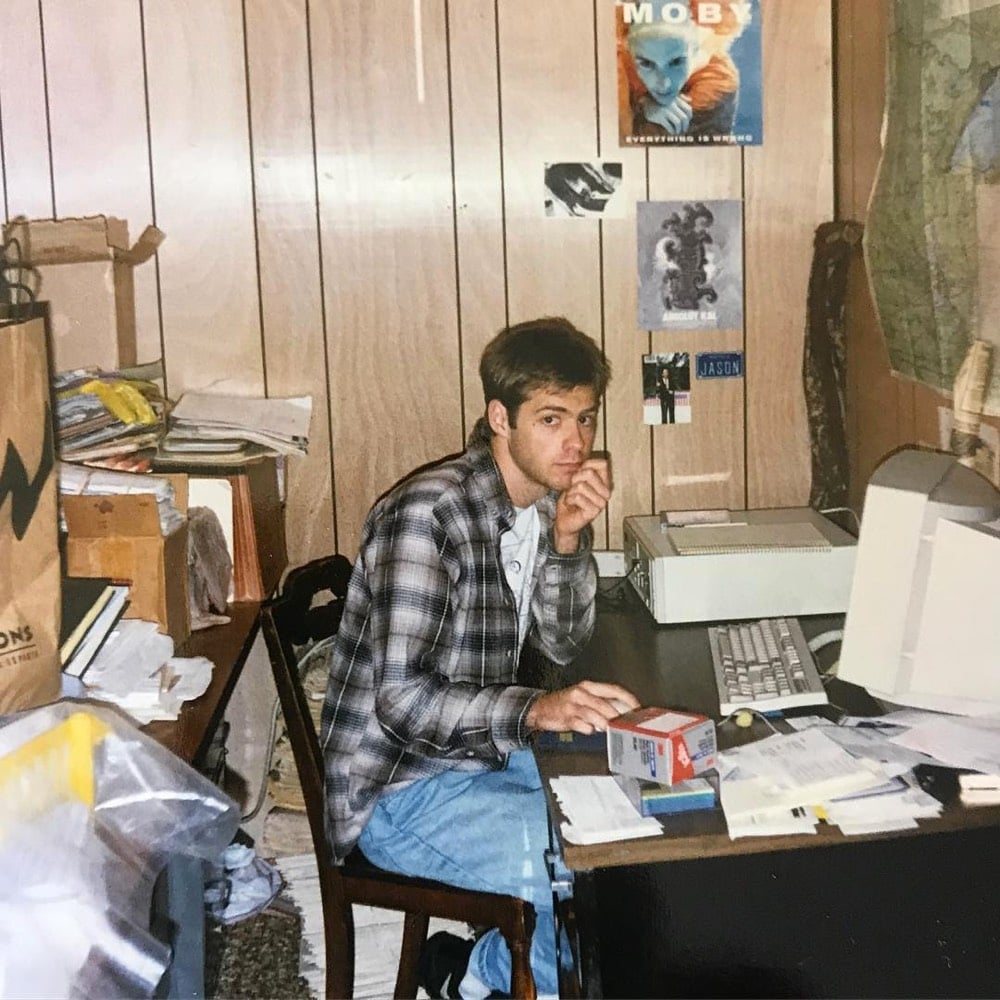
That tiny baby Jason loved cheese, Quentin Tarantino, and the World Wide Web, bless his little heart.
Anyway, the sites I built then were terrible at first, but I was obsessed and slowly they improved. some web space turned into a site called 0sil8, which became a playground of sorts for my experiments in writing and design. Every few weeks/months, I’d create a new “episode” to put up on 0sil8 and gradually I gained an online following and became part of a community of folks who were likewise experimenting with the web.
Around this time, more and more of what I was reading online were diaries and these things called weblogs.2 The updates on weblogs & diaries were smaller but more frequent than on other personal sites — their velocity felt different, exhilarating. But by the time I actually got interested enough to start my own weblog, there were so many of them — hundreds! maybe thousands! — that I thought I was too late, that no one would be interested. I forged ahead anyway and on March 14, 1998, I started the weblog that would soon become kottke.org. It was called Notes and here’s what it looked like:
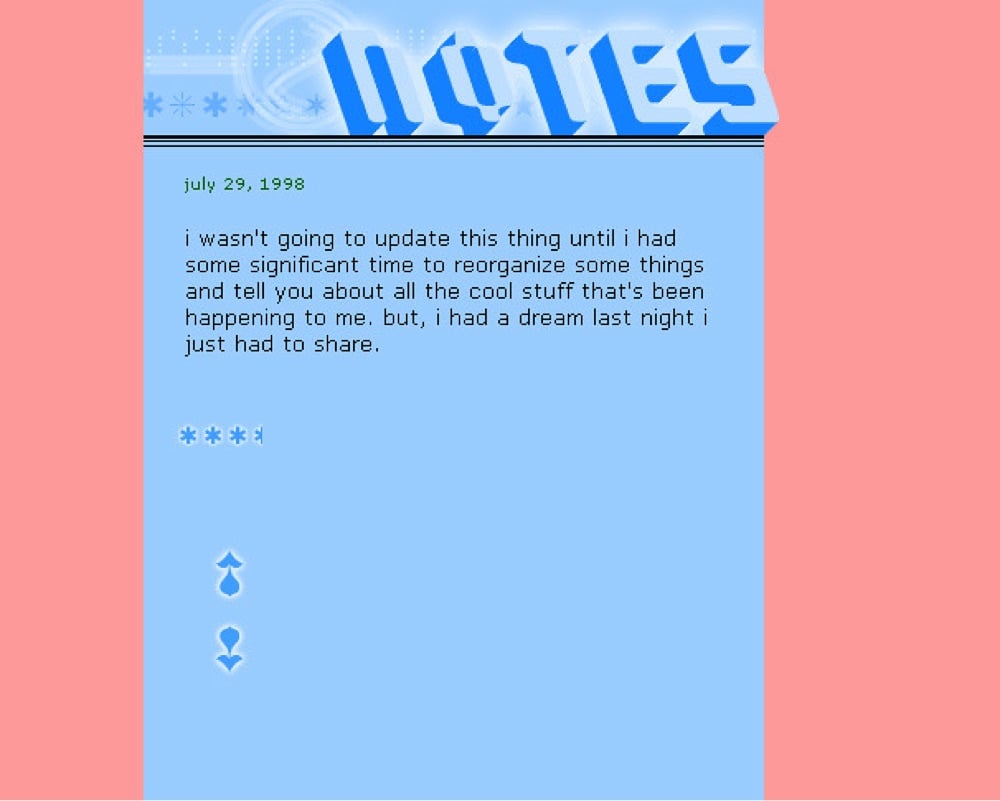
I’m not gonna go through the whole history of the site, but it eventually took off in a way that I didn’t anticipate. Since 2005, kottke.org has been my full-time job and supports my family. I’ve met so many people from all over the world through my work here, including many life-long friends and my (now ex-) wife. I’ve spoken at conferences and travelled the world. I got to be on TV. I launched a membership program (which you should totally join if you haven’t already) that has given the site an incredible boost as it powers through its third decade.
On the occasion of the 20th anniversary of kottke.org, I wrote this:
I’ve been reading back through the early archives (which I wouldn’t recommend), and it feels like excavating down through layers of sediment, tracing the growth & evolution of the web, a media format, and most of all, a person. On March 14, 1998, I was 24 years old and dumb as a brick. Oh sure, I’d had lots of book learning and was quick with ideas, but I knew shockingly little about actual real life. I was a cynical and cocky know-it-all. Some of my older posts are genuinely cringeworthy to read now: poorly written, cluelessly privileged, and even mean spirited. I’m ashamed to have written some of them.
But had I not written all those posts, good and bad, I wouldn’t be who I am today, which, hopefully, is a somewhat wiser person vectoring towards a better version of himself. What the site has become in its best moments — a slightly highfalutin description from the about page: “[kottke.org] covers the essential people, inventions, performances, and ideas that increase the collective adjacent possible of humanity” — has given me a chance to “try on” hundreds of thousands of ideas, put myself into the shoes of all kinds of different thinkers & creators, meet some wonderful people (some of whom I’m lucky enough to call my friends), and engage with some of the best readers on the web (that’s you!), who regularly challenge me on and improve my understanding of countless topics and viewpoints.
I had a personal realization recently: kottke.org isn’t so much a thing I’m making but a process I’m going through. A journey. A journey towards knowledge, discovery, empathy, connection, and a better way of seeing the world. Along the way, I’ve found myself and all of you. I feel so so so lucky to have had this opportunity.
That all still rings incredibly true and I cannot improve upon it as an explanation of why I’m still here doing this moderately anachronistic thing. Thank you all so much for reading. ♥
P.S. You can read my thoughts on past anniversaries and view some previous site designs here: 10 years, 18-ish years, 20 years, and 24 years.
P.P.S. I wrote a separate post about this yesterday, but if you find value in what I do here, I’d appreciate if you’d support the site by purchasing a membership. And to everyone who has supported the site over the years, thank you so much!
P.P.P.S. Last one: I’m gonna write more about this later today, but I’ve turned ordering back on for Kottke Hypertext Tees for the next 24 hours or so. Go get ‘em!
P.P.P.P.S. Ha, I’ve thought of one more thing: I’ve turned comments on for this post! kottke.org used to allow comments on every post, but it’s been almost 8 years since the last time they were on. I figured it would be fun to try them out today. No idea if they’re even going to work or how long they will be available, but let’s try it out. If you’d like to share how long you’ve been reading the site or leave any memories or observations, feel free. My inbox is open as well. Ok, that’s really all for now! Thank you!
Update: A bunch of comments got hung up in a spam filter in my CMS that I didn’t even know was active. They should be all through now…sorry about that!
Fun fact: when kottke.org started, I wrote everything in lowercase. At some later point, I switched to mixed-case and went back through the old entries and edited them to use mixed-case too.↩
Peter Merholz wouldn’t coin the word “blog” until sometime in early 1999; they were known as weblogs before then.↩
The Notre Dame in Paris is scheduled to reopen in late 2024. “The reconstruction itself started last year, after more than two years of work to make the monument stable and secure enough for artisans to start rebuilding it.”
How to Draw Fantasy World Maps
I am not a particular fan of fantasy games, but I do like watching people draw and talk about their process, particularly when it’s accessible to beginners. On his YouTube channel, JP Coovert shows people how to draw maps for fantasy games, books, and other media. Here’s a few examples to whet the appetite.
(via the kid should see this)
Kottke 25: It’s Membership Time!
Good morning! Tomorrow marks 25 years of blogging here at kottke.org and it’s been more than three months since I returned from my sabbatical, so I thought it would be a good time to:
a) Once again express my heartfelt thanks to those of you who have supported the site over the years by purchasing a membership. Kottke.org has been my full-time job since 2005, and I’ve said this many times before but: this membership support is essential in keeping the site running so smoothly, with few membership solicitations like this one, very minimal advertising, no popup newsletter sign-up forms, a full-text RSS feed w/ no ads, etc. etc. etc.
And perhaps nearest and dearest to my heart, member support keeps the site free, open, and available to everyone on an internet that is increasingly paywalled. It’s not difficult to imagine an alt-universe kottke.org with ads crammed into every bit of whitespace, email collection forms popping up on every visit, and half the site behind a members-only paywall. No shade to those who have gone that route to keep things running — I’d probably make more money with members-only content on Substack or whatever and that pull is tempting. But seriously, I love you folks so much for collectively keeping all of kottke.org on the open web. Thank you.
b) Cajole those of you who aren’t currently members to sign up for a membership today or, in the case of former members, to restart your memberships.1 I’m not going to give you the hard sell here — I listed some reasons to join in the preceding paragraphs and if you’re a regular reader, I don’t have to tell you the value you get from the site; you already know that for yourself. What I’m asking is: if you appreciate what I do here and you can manage it, please support the site by purchasing a membership.
—-
I also wanted to give you a brief update & behind-the-scenes about what happened with memberships during my sabbatical and in the months since I’ve returned. One of my biggest hesitations about taking time off from the site was losing revenue from both memberships and advertising. I was unsure how my announcement would be received and was worried I was somehow idiotically crashing this tiny, fragile business of mine onto the shoals. After probably too much thinking/anxiety about it, I decided I needed the break more than the revenue and that I could build memberships back up again after I returned. It was a risk, but one I decided I needed to take.
When I announced the sabbatical back in May 2022, something completely unexpected happened: memberships went up. People signed up or increased their membership levels specifically to support me taking time off, and very few people cancelled. I actually burst into tears when I checked my member dashboard and saw this happening in the hours after the announcement. That display of support — and the hundreds of emails2 I received — allowed me the space and peace of mind I needed to fully disengage and disconnect from my work here to reflect and recharge (and, like, get some chores done around the house for a change).
Fast forward to the end of October. I wasn’t quite ready to return to work yet. Because I’d launched the membership program back in November of 2016, I’d say about 60-70% of all annual memberships still renew in early November.3 You may be able to guess what happened: despite a brief update on my plans to return soon, many people cancelled their memberships. That decline has continued in the following months, even after I returned to work. In fact, there are about 10% fewer members now than there were right before I logged off in May. So, the drop-off in revenue I expected when I took a break was just delayed by a few months.
When I returned at the beginning of December, I wanted to knuckle down and focus on the site and not bug you about memberships. Ship first, worry about revenue later. Now that I’ve been back at it full-time for three-and-a-half months, I’d like to build membership levels back up again, ideally to pre-sabbatical levels. Once again, you can check out your membership options here if you’d like to help me reach that goal.
Fun fact: right now, there are more former members of kottke.org than there are current members. Would like to change that!↩
I read every single email and responded to as many as I could. My apologies if I didn’t reply to yours…there were just too many!↩
Just as a sidebar, this creates an interesting cashflow situation — I get like 60% of my total revenue for the whole year delivered to my bank account in a space of 2 weeks. But I obviously have expenses and estimated tax payments that occur throughout the year, so I need to budget and manage that carefully. I’ve gotten used to it, but it’s taken awhile to acclimate.↩
Everything Everywhere All at Once!
I loved Everything Everywhere All at Once so much when I saw it in the theater last spring. It caught me in a low moment and swept me up in a protective embrace; it was magic. I was afraid this joyously weird movie would get lost in the Very Serious Film shuffle come awards time but I was beyond thrilled when I woke up this morning to the news that EEAAO swept the major categories for which it was nominated at the Oscars. Here are all the film’s wins from last night:
Best Picture - Daniel Kwan, Daniel Scheinert, and Jonathan Wang, producers (acceptance speech).
Best Director - Daniel Kwan and Daniel Scheinert (acceptance speech).
Best Actress - Michelle Yeoh (acceptance speech).
Best Supporting Actor - Ke Huy Quan (acceptance speech).
Best Supporting Actress - Jamie Lee Curtis (acceptance speech).
Best Original Screenplay - Daniel Kwan and Daniel Scheinert (acceptance speech).
Best Film Editing - Paul Rogers (acceptance speech).
So happy for Michelle Yeoh and Ke Huy Quan in particular! Here are their acceptance speeches:
I am disappointed, but only slightly, that Stephanie Hsu didn’t win Best Supporting Actress — her audition for the role of Joy/Jobu Tupaki is amazing if you haven’t seen it. (And she also sang with David Byrne (who wore hot dog fingers) last night?)
Watch Stephanie Hsu’s brilliant audition for Everything Everywhere All At Once. I won’t say Jamie Lee Curtis didn’t deserve her Oscar, but Hsu would have been my choice.
Kottke 25: The Talk Show With John Gruber
Kottke.org is turning 25 years old this Tuesday and I’ll be doing a few posts this week related to the (silver!) anniversary. First up: John Gruber was kind enough to host me for a short chat on his podcast, The Talk Show. Our time together was pretty limited, but we still managed to talk about the good ol’ days of the web & blogging, my recent sabbatical, burnout, Dean Allen, kottke.org’s 25th anniversary, Suck.com, hypertext, Stellar, and several other topics I can’t remember.
You can listen this episode of The Talk Show on Apple Podcasts, Spotify, or wherever you listen to podcasts.
SpaceX Crew Member Realizes He Fired After Being Locked Out Of Capsule. “Judging by the fact that I have no space shuttle access, everyone is ignoring me, and I’m floating endlessly in space, I think I can put two and two together…”
I know parents are always on the lookout for engaging tabletop games for their kids; check out these roleplaying games from AMPERSAND RPG that kids and parents can play together.
Finally, the Answers to Cold Weather Mysteries
If you live in any sort of winter climate, you have, at one time or another, wrestled with the two great mysteries of cold weather life:
1. Why does 50°F in the fall make you want to bundle up while 50°F in the spring makes you want to go for a walk in short sleeves?
2. Why the hell do kids wear shorts during the winter or go without coats when it’s literally freezing out? Like seriously, what the hell?
This short video answers both questions with one magical substance: brown fat.
55 degrees in the summer feels colder than 55 degrees in the winter. And 55 degrees as an adult likely feels colder than 55 degrees as a kid. But it’s not just a feeling. It all has to do with how our bodies use fat - specifically brown fat, a lesser-known type of fat that can produce roughly 300 times more heat than any other tissue in the body.
Brown fat isn’t the type of fat that adds to our weight (that’s white fat). Brown fat has the sole purpose of being burnt for heating the body, and it’s extremely effective at that. It only appears in specific parts of the body: around the neck, spine, heart, and kidneys. (It clumps around major blood vessels, in order to warm the blood as it passes through the body.)
In brief: 1. We have more brown fat in the spring, and 2. Kids have more brown fat in their bodies than adults. Cool! (har har)
Zeynep Tufekci: Here’s Why the Science Is Clear That Masks Work
You may have seen the online kerfuffle a few weeks ago about a study that was released recently that indicated that there was no evidence that masks work against respiratory illnesses (see Bret Stephen’s awful ideologically driven piece in the NY Times for instance). As many experts said at the time, that’s not what the review of the studies actually meant and the organization responsible recently apologized and clarified the review’s assertions.
In a typically well-argued and well-researched piece for the NY Times, Zeynep Tufekci explains what the review actually shows and why the science is clear that masks do work.
Scientists routinely use other kinds of data besides randomized reviews, including lab studies, natural experiments, real-life data and observational studies. All these should be taken into account to evaluate masks.
Lab studies, many of which were done during the pandemic, show that masks, particularly N95 respirators, can block viral particles. Linsey Marr, an aerosol scientist who has long studied airborne viral transmission, told me even cloth masks that fit well and use appropriate materials can help.
Real-life data can be complicated by variables that aren’t controlled for, but it’s worth examining even if studying it isn’t conclusive.
Japan, which emphasized wearing masks and mitigating airborne transmission, had a remarkably low death rate in 2020 even though it did not have any shutdowns and rarely tested and traced widely outside of clusters.
David Lazer, a political scientist at Northeastern University, calculated that before vaccines were available, U.S. states without mask mandates had 30 percent higher Covid death rates than those with mandates.
Randomized trials are difficult to do with masks and are not the only way to scientifically prove something. I’m hoping for an update that the entire premise of that Stephens piece is incorrect and will be removed from the Times’ website, but I don’t think it’s going to happen.
A Marvelously Huge Wall of Working Elevator Buttons



I enjoyed this video on how Shimada Electric Manufacturing Company makes elevator buttons, but I was utterly captivated by the giant wall of working buttons that they have in their office — Great Glass Elevator vibes for sure. Some screencaps are above…you can see the wall in action at the end of the video.
I want to visit! What fun to be able to press all of those buttons without the fear of irritating everyone else in the tiny box you’re all travelling in! Looks like they offer factory tours — maybe I’ll try to do that when I finally visit Japan. (Also, this would make a great art installation in a museum. You could say it was commentary on humanity’s helplessness against increasingly powerful and prolific technology (AI, if you want to be trendy). But really, people would just enjoy pushing the buttons.)
Remember that lunar lander game from earlier in the week? Someone made an autopilot for it that makes a perfect landing every time.
Blood Money is a new book about the international for-profit blood plasma industry. “There are people doing it to buy groceries and to pay for housing. There are also people who are selling plasma to take a vacation.”
Living Off the Power Grid in NYC
Starting last May and continuing through at least January of this year, Joshua Spodek has cut the ultimate cord: living off of the electrical grid in perhaps the most electrically connected place in the United States: Manhattan. Spodek wrote a fascinating article about his experiment in urban off-the-grid living for Ars Technica.
Some changes that made the experiment work included reading more books, writing by hand, choosing salads over cooked foods, going out instead of staying in, and shifting work to daytime hours. At first, I considered these changes sacrifices, but looking back, I view them more as a cultural shift, a bit like when I lived overseas and couldn’t find a good bagel. Finding the local equivalent-croissants in Paris or vegetable steamed buns in Shanghai-worked better than complaining, and it expanded my world.
Whenever I was tempted to lament the sacrifices I was making, I reminded myself that people have been living in Manhattan for around 10,000 years — technology shouldn’t make me less able or resilient than them.
The one thing I couldn’t sacrifice was my pressure cooker, which was the most efficient way to cook (and my greatest single consumer of energy). A full battery charge would power the cooker to make stew good for five meals and still leave a couple of hours’ charge for my computer and phone. I used almost no other appliances. I began waking up with the sun at 5 am to avoid needing lights. My battery has a one-watt LED that sufficed for cooking and eating, so I haven’t used my floor lamp.
There are some cheats and caveats (like, it’s impossible to live in Manhattan without indirectly benefiting from all the generated energy around you) but what an intriguing experiment. (via @irwin)
What to Expect When You’re Expecting to Be a Gen-X Girl. “Your parents will never, not once, wonder if you’re hydrated.”
AI is being used to find formerly undetectable samples from songs by Daft Punk, Mobb Deep, etc. “Google Assistant can even detect samples less than a second long, and is usually able to detect samples that have been chopped or time-stretched.”
A Guitar Made From Ikea Furniture
Tchiks is a luthier from Belgium who, after his daughter outgrew her crib, turned it and a bunch of other Ikea products into a guitar.
The guitar started out as a joke. I remember going upstairs and telling my wife “I’m gonna make a guitar out of Zoé’s old bed”. She rolled her eyes to the ceiling and asked me “why”. Then I immediately thought “This is the way”.
It sounds good! Like any good craftspeople, luthiers can get a little fussy about their materials and the specs list for the Ikea guitar at the end of the video pokes some gentle fun at that:
Body: baby crib, chair, shelf
Neck: baby crib
Fretboard: photo ledge
Knob: chopping board
(via linkfest)
Rosecrans Baldwin: Los Angeles Is a Fantastic Walking City. No, Really. “Probably most of Greater L.A. is awful to experience on foot. Yet there’s so much of it, radiating from multiple cores, that the amount worth walking is colossal.”
From There I Ruined It, a “yeah” medley featuring Britney, The Beatles, Nirvana, Dua Lipa, Snoop Dogg, and Queen.
Alien Worlds - Macro Photos of Fungi and Slime Molds



When you look at these incredible close-up shots of fungi and slime molds by photographer and amateur mycologist Max Mudie, you realize that we don’t have to go looking for bizarre alien life on other planets: there’s plenty of it in our forests. (See also coral reefs, tbh.) Check out more of Mudie’s work on Instagram.
I’m almost positive I’ve featured the photograph at the top of the post before (but can’t find where), but I love it so much I’m featuring it again.
See also Alison Pollack’s work. (via colossal)
A recently discovered comet, C/2023 A3, may put on a show for us in September 2024 when its brightness may “rival some of the brightest stars in the sky”.
How to expand solar power without using precious land. “Deployed in the right way, solar installations can boost crop yields, save water, and protect biodiversity.”
The First Battleground of the Age of AI Is Art
In this final installment of Everything is a Remix, Kirby Ferguson offers his perspective on image generation with AI, how it compares to human creativity, and what its role will be in the future. In watching the part about the anxiety in the creative community about these image generators, I was reminded of what Ted Chiang has said about fears of technology actually being fears of capitalism.
It’s capitalism that wants to reduce costs and reduce costs by laying people off. It’s not that like all technology suddenly becomes benign in this world. But it’s like, in a world where we have really strong social safety nets, then you could maybe actually evaluate sort of the pros and cons of technology as a technology, as opposed to seeing it through how capitalism is going to use it against us.
I agree with Ferguson that these AI image generators are, outside the capitalist context, useful and good for helping humans be creative and express themselves. Tools like Midjourney, DALL-E, and Stable Diffusion allow anyone to collaborate with every previous human artist that has ever existed, all at once. Like, just think about how powerful this is: normal people who have ideas but lack technical skills can now create imagery. Is it art? Perhaps not in most cases, but some of it will be. If the goal is to get more people to be able to more easily express and exercise their creativity, these image generators fulfill that in a big way. But that’s really scary — power always is.
The Cargobox Urban Utility EV
Cargobox is a design concept by Meelis Lillemets for a small electric utility vehicle that embraces the boxy aesthetic in a rib-crunching bear hug. I mean, just look at this absolute rectilinear unit:


It’s like a Knoll shelving unit on wheels! Because the Cargobox is designed for use in cities, you can trade aerodynamic factors for other advantages:
Due to Cargobox only operating up to urban speeds, this study explores the extreme possibilities of design with little considerations for aerodynamics and lots of considerations for simplicity, cost, practicality, modularity.
The Cargobox will be available this fall at your local Design Within Reach store — jkjk. But seriously, the US post office should order a few thousand of these — they’d look really sharp with the red, white, and blue USPS colorway. (via yanko design)
“Heatmap is a new media company focused on the biggest story in the world: the great climate and energy transition.”
Love Letters from Letterboxd
The Oscars are this weekend and in this video, some of the nominees — Paul Mescal, Rian Johnson, Todd Field, Camille Friend (hairstylist for Wakanda Forever) — read rave reviews of their work from Letterboxd. Watch to the end — Ke Huy Quan’s letter, and his reaction to it, is especially wonderful.
Ten years ago, I met the founders of Letterboxd in New Zealand. The site was tiny then and had just gotten out of invitation-only mode. But they were enthusiastic and had a vision of making an online space for discussing and reviewing movies. It’s wonderful to see the site become such a key part of the film industry. (via @jasonsantamaria)
“People on TikTok are paying elderly women to sit in stagnant mud for hours and cry.” Cool dystopia we’ve built here…
How Tolkien Conceived of the One Ring - By Muddle Not Masterstroke
Inspired by a reread of The Lord of the Rings, Robin Sloan has been reading The History of The Lord of the Rings, a four-volume book series that details Tolkien’s process of writing LOTR. As he read, the idea of Tolkien as Middle-earth master planner fell away and the text revealed a writer who muddles through and revises, just like the rest of us. Here’s Sloan on Tolkien’s conception of the One Ring’s backstory (“One Ring to rule them all, One Ring to find them, One Ring to bring them all and in the darkness bind them”, etc.):
In a single stroke, we get: a mythic backstory, a grand MacGuffin, a sense of language and history, the sublimely satisfying train of magic numbers - three … seven … nine … ONE! - plus something graphically weird and beautiful on the page.
It’s all just tremendous — the perfect kernel of Tolkien’s appeal.
And, guess what:
Not only was the inscription missing from the early drafts of LOTR … the whole logic of the ring was missing, too. In its place was a mess. The ring possessed by Bilbo Baggins was one of thousands the Dark Lord manufactured, all basically equivalent: they made their wearers invisible, and eventually claimed their souls. They were like cursed candies scattered by Sauron across Middle-earth.
Tolkien’s explanation of this, in his first draft, is about about as compelling as what I just wrote.
It’s fine, as far as it goes; he could have made it work, probably? Possibly? But it is not COOL in the way that the final formulation is COOL. It has none of the symmetry, the inevitability. It does only the work it has to do, and nothing else. It is not yet aesthetically irresistible.
There are several revised approaches to “what’s the deal with the ring?” presented in The History of The Lord of the Rings, and, as you read through the drafts, the material just … slowly gets better! Bit by bit, the familiar angles emerge. There seems not to have been any magic moment: no electric thought in the bathtub, circa 1931, that sent Tolkien rushing to find a pen.
It was just revision.
I find this totally inspiring.
Kottke AMA Update
Hey gang, I just wanted to provide a quick update on the upcoming kottke.org AMA (ask me anything). You’ve collectively asked almost 300 questions (!!) and I was going to start answering them this week, but I’m going to hold off for another couple of weeks. It’s gonna take me time to read and sort through them all and next week is jam-packed with other goings-on here — stay tuned! In the meantime, I’m still soliciting questions here so fire away. Looking forward to it!
I always enjoy reading Dennis Crowley’s “open source soccer” progress reports on running Kingston Stockade FC, a small soccer club in the Hudson Valley. “I’m focused on building something that’s around forever…”
The Apple II Age: How the Computer Became Personal. “If you want to understand how Apple Inc. became an industry behemoth, look no further than the 1977 Apple II.”
Augmented Reality Ski Goggles
The other day on the chair lift, my kids and I were talking about our top skiing speeds (me: low 40s, them: 50+) and one of us mentioned that it would be cool if your current speed was shown on a heads-up display in your goggles. So this morning I went looking for AR ski goggles and of course they exist. Here are a pair of demo videos from Sirius (made by Oostloong) and Rekkie.
These googles include features like real-time speed, clock, temperature, friend finding/tracking, wayfinding (directions, compass, elevation), HD recording, and phone notifications. Skiing is a natural use for AR — you’re wearing the bulky goggles for safety anyway, so you can hide all the necessary tech in there without looking ridiculous, and taking your mittens on and off to check the time or send/read texts is annoying.
I’d love to try some of these, to see how the interface and notifications work — I worry that it would be unsafe because it requires too much of the skier’s attention. Being on anything but the bunniest slopes with people who are reading text messages and clocking their speed as they’re skiing is not something I’d be into — the idiots with the GoPros on selfie sticks are bad enough. I’m also skeptical that the electronics and control buttons on these devices will be able to withstand the beating that ski goggles undergo over the course of a season, especially if they’re subjected to any skiing in the woods. If they could get it right though, I could see these being fun and useful.
Still Life, a stop-motion animation from Conner Griffith “composed of over 1000 engravings from the 19th century”.
Important reminder: as of last week, De La Soul’s music is finally available on streaming platforms.
An Excerpt From David Grann’s Forthcoming Book, The Wager

David Grann’s newest book, The Wager: A Tale of Shipwreck, Mutiny and Murder (ebook), comes out next month. It tells the story of a British shipwreck that happened during the war with Spain in the 1740s. The New Yorker, where Grann is a staff writer, is running an excerpt from the book to whet your appetite.
Each man in the squadron carried, along with a sea chest, his own burdensome story. Perhaps it was of a scorned love, or a secret prison conviction, or a pregnant wife left onshore weeping. Perhaps it was a hunger for fame and fortune, or a dread of death. David Cheap, the first lieutenant of the Centurion, the squadron’s flagship, was no different. A burly Scotsman in his early forties, with a protracted nose and intense eyes, he was in flight — from squabbles with his brother over their inheritance, from creditors chasing him, from debts that made it impossible for him to find a suitable bride. Onshore, Cheap seemed doomed, unable to navigate past life’s unexpected shoals. Yet, as he perched on the quarterdeck of a British man-of-war, cruising the vast oceans with a cocked hat and spyglass, he brimmed with confidence — even, some would say, a touch of haughtiness. The wooden world of a ship — a world bound by the Navy’s rigid regulations and the laws of the sea and, most of all, by the hardened fellowship of men — had provided him a refuge. Suddenly, he felt a crystalline order, a clarity of purpose. And Cheap’s newest posting, despite the innumerable risks that it carried, from plagues and drowning to enemy cannon fire, offered what he longed for: a chance to finally claim a wealthy prize and rise to captain his own ship.
The problem was that he could not get away from the damned land. He was trapped-cursed, really-at the dockyard in Portsmouth, along the English Channel, struggling with feverish futility to get the Centurion fitted out and ready to sail. Its massive wooden hull, a hundred and forty-four feet long and forty feet wide, was moored at a slip. Carpenters, caulkers, riggers, and joiners combed over its decks like rats (which were also plentiful). A cacophony of hammers and saws. The cobblestone streets past the shipyard were congested with rattling wheelbarrows and horse-drawn wagons, with porters, peddlers, pickpockets, sailors, and prostitutes. Periodically, a boatswain blew a chilling whistle, and crewmen stumbled from ale shops, parting from old or new sweethearts, hurrying to their departing ships in order to avoid their officers’ lashes.
Grann is so good at both telling the larger tale and inserting wonderful turns of phrase throughout. Can’t wait to read this one.
I didn’t know there was a Devil in the White City series in the works…and now it’s dead? Maybe? Lots of boldfaced names were attached to this project: DiCaprio, Scorsese, Keanu Reeves, Todd Field, Jude Law, Jeremy Allen White.
I’m Blogging
I have no idea what this video is or where it came from (and I don’t want to?) but this is basically me between 9am and 3pm everyday.
Hold my calls, I’m busy blogging! (via andy)
Notes Art



Every day, Chris Silverman draws a small artwork using only the Notes app on his iPhone.
#notesArt is a style formed by the limitations of the medium: I draw with my finger on a screen the size of a 3-by-5 card, using drawing tools that were designed for annotating documents, not making artwork. Similar to an app, each work is minimalist and limited in scope. The simple nature of the tool allows me to focus on the essence of each piece; perhaps a strange thing to be able to do on a device known primarily for providing distraction.
Like he says, this is a great example of how contraints can foster creativity. Here’s what I don’t understand though: WTF? How does anyone do drawings this detailed in the Notes app with just their finger?! I just tried to make a smiley face and it looks like a 3-year-old did it. (Ok, a 1-year-old.)
Oh my god, this in-browser lunar lander game sucked up way too much of my time last night.
From The Women of Interaction Design, a short profile of the legendary Ray Eames. (Check out the other profiles while you’re there too.)
The Rules for Travelling on the Autobahn Through East Germany to West Berlin
This is fascinating: an instructional video from 1988 for British Royal Military Police personnel to watch before travelling the 103 miles of autobahn across East Germany to West Berlin. (A Cold War refresher: West Berlin was completely surrounded by East Germany — the city was not on the border.) Those in transit had to follow many rules:
Approach the Soviet sentry who will be standing close to the small hut on the left of the road. He will salute you. You must, irrespective of your sex, status, or form of dress, return his salute.
They also couldn’t stop anywhere but a few designated areas, could only deal with Soviet personnel (and not East German personnel), were forbidden from speaking Russian, and obviously couldn’t take photos. What a time capsule!
See also this video that reconstructs that journey, from someone who was stationed in West Germany in the late 80s. (via open culture)
Bad Projection Is Ruining the Movie Theater Experience. Patrons end up paying more than a monthly Netflix subscription (per seat!) for a picture that’s dim & off-kilter bc theater chains are skimping on skilled projectionists.
Explore Hundreds of Exquisite Botanical Collages Created by an 18th-Century Septuagenarian Artist. Mary Delany’s “realistic works are both stunning for their beauty and faithfulness to the original lifeforms”.
Winners of This Year’s World Nature Photography Awards

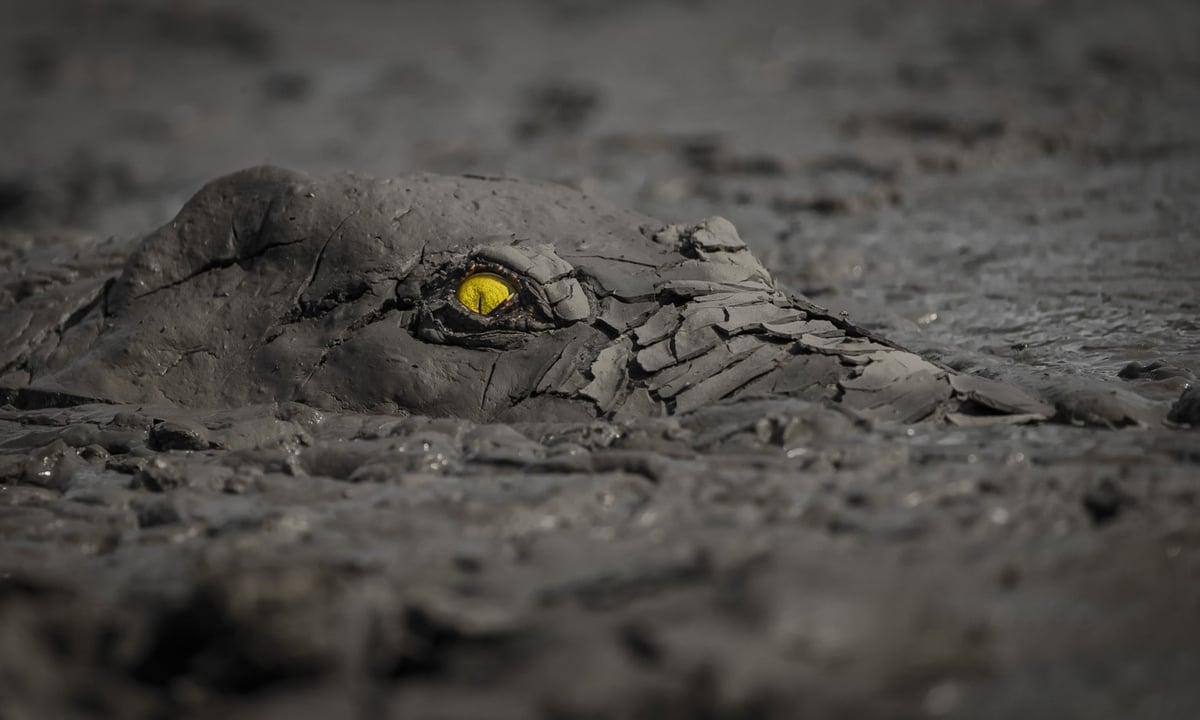


The winners and runners-up of the 2022 World Nature Photography Awards have been announced. An amazing collection of photos as usual — I’ve included some of my favorites above. From top to bottom, photos by Mr. Endy (couldn’t find a website), Jens Cullmann, Jake Mosher, and Sascha Fonseca. Fonseca had this to say about his incredible photo of the snow leopard above:
A beautiful snow leopard triggers my camera trap high up in the Indian Himalayas. I captured this image during a 3-year DSLR camera trap project in the Ladakh region in northern India. The mystery surrounding the snow leopard always fascinated me. They are some of the most difficult large cats to photograph in the wild. Not only because of their incredible stealth, but also because of the remote environment they live in.
Jon Stewart Calmly Dismantles Gun Zealot
*sigh* I get it. I get why people are so enthused about this Jon Stewart video. If you haven’t seen it, it’s a clip from Stewart’s show on Apple+ where he’s debating a Second Amendment purist gun nut who also happens to be a state senator from one of the states that’s trying to take away health care, reproductive rights, and persecute/prosecute LGBTQ+ people for daring to exist in public — basically a real “rights for me but not for thee” dickbag.
Anyway, I guess it’s fun to see Stewart dismantle this guy but arguing with a dimwitted ideologue in this manner is like that old saying: “What’s the sense of wrestling with a pig? You both get all over muddy…and the pig likes it.” Conservatives in America want what they want and don’t care about the arguments against it or facts or consensus or bipartisan anything. They only care about their radical ideology and their constituents who agree with them (and their constituents who don’t can go fuck themselves, I guess). In fact, they welcome arguments because it wastes the time and energy of people who would argue with them and they can’t lose because they don’t care about facts and they increasingly have no shame. See also Can You Really ‘Back The Blue’ If You’re Weak on Guns? from the same show.
Anyway, anyway, anyway…it’s gonna be a fun Monday here I guess.
The Wooden Toy Train Video Game
I randomly came across this YouTube video from an engineer (civil, not railroad) who was building virtual railroads using wooden toy tracks, you know from when you were a kid. Anyway, it turns out that he was playing an open-world game called Tracks, which is available on Steam, Nintendo Switch, and Xbox. Looks fun — if I ever get any free time again, I might give this one a shot.
Grand Canons, a Visual Symphony of Everyday Objects
Ok, this is one where you’re going to have to trust me and just watch it. Grands Canons is a stop-motion animated video by Alain Biet of thousands of meticulously hand-painted images of everyday items moving and dancing to music.
A brush makes watercolors appear on a white sheet of paper. An everyday object takes shape, drawn with precision by an artist’s hand. Then two, then three, then four… Superimposed, condensed, multiplied, thousands of documentary drawings in successive series come to life on the screen, composing a veritable visual symphony of everyday objects. The accumulation, both fascinating and dizzying, takes us on a trip through time.
It’s really just wonderful — once you get into it, you won’t be able to stop watching. More of Biet’s work can be found on his website or on Instagram. (via waxy & colossal)
Football Is Forbidden
A beautiful scene from the 2014 Mauritanian film Timbuktu (which was recently included on Slate’s New Black Film Canon), in which young men under the rule of Islamic extremists quietly and defiantly play a forbidden football match with an imaginary ball. (thx, caroline)
Interesting conversation with Na Zhong, translator of Sally Rooney’s three novels into Simplified Chinese. “The level of interest in themselves shown by Sally Rooney’s characters would risk being criticized as self-absorption in Chinese literature…”
The Octopus Test for Large Language Model AIs
In 2020, before the current crop of large language models (LLM) like ChatGPT and Bing, Emily Bender and Alexander Koller wrote a paper on their limitations called Climbing towards NLU: On Meaning, Form, and Understanding in the Age of Data. In the paper, Bender and Koller describe an “octopus test” as a way of thinking about what LLMs are capable of and what they aren’t. A recent profile of Bender by Elizabeth Weil for New York magazine (which is worth reading in its entirety) summarizes the octopus test thusly:
Say that A and B, both fluent speakers of English, are independently stranded on two uninhabited islands. They soon discover that previous visitors to these islands have left behind telegraphs and that they can communicate with each other via an underwater cable. A and B start happily typing messages to each other.
Meanwhile, O, a hyperintelligent deep-sea octopus who is unable to visit or observe the two islands, discovers a way to tap into the underwater cable and listen in on A and B’s conversations. O knows nothing about English initially but is very good at detecting statistical patterns. Over time, O learns to predict with great accuracy how B will respond to each of A’s utterances.
Soon, the octopus enters the conversation and starts impersonating B and replying to A. This ruse works for a while, and A believes that O communicates as both she and B do — with meaning and intent. Then one day A calls out: “I’m being attacked by an angry bear. Help me figure out how to defend myself. I’ve got some sticks.” The octopus, impersonating B, fails to help. How could it succeed? The octopus has no referents, no idea what bears or sticks are. No way to give relevant instructions, like to go grab some coconuts and rope and build a catapult. A is in trouble and feels duped. The octopus is exposed as a fraud.
The paper’s official title is “Climbing Towards NLU: On Meaning, Form, and Understanding in the Age of Data.” NLU stands for “natural-language understanding.” How should we interpret the natural-sounding (i.e., humanlike) words that come out of LLMs? The models are built on statistics. They work by looking for patterns in huge troves of text and then using those patterns to guess what the next word in a string of words should be. They’re great at mimicry and bad at facts. Why? LLMs, like the octopus, have no access to real-world, embodied referents. This makes LLMs beguiling, amoral, and the Platonic ideal of the bullshitter, as philosopher Harry Frankfurt, author of On Bullshit, defined the term. Bullshitters, Frankfurt argued, are worse than liars. They don’t care whether something is true or false. They care only about rhetorical power — if a listener or reader is persuaded.
The point here is to caution against treating these AIs as if they are people. Bing isn’t in love with anyone; it’s just free-associating from an (admittedly huge) part of the internet.
This isn’t an exact analogue, but I have a car that can drive itself under certain circumstances (not Tesla’s FSD) and when I turn self-drive on, it feels like I’m giving control of my car to a very precocious 4-year-old. Most of the time, this incredible child pilots the car really well, better than I can really — it keeps speed, lane positioning, and distance to forward traffic very precisely — so much so that you want to trust it as you would a licensed adult driver. But when it actually has to do something that requires making a tough decision or thinking, it will either give up control or do something stupid or dangerous. You can’t ever forget the self-driver is like a 4-year-old kid mimicking the act of driving and isn’t capable of thinking like a human when it needs to. You forget that and you can die. (This has the odd and (IMO) under-appreciated effect, when self-drive is engaged, of shifting your role from operator of the car to babysitting the operator of the car. Doing a thing and watching something else do a thing so you can take over when they screw up are two very different things and I think that until more people realize that, it’s going to keep causing unnecessary accidents.)
OpenAI Is Now Everything It Promised Not to Be: Corporate, Closed-Source, and For-Profit. We really need to stop believing hardcore capitalists when they make promises like this. When someone shows you who they are…
Succession, The Final Season
The official trailer for the now-confirmed final season of Succession (until they do one more, like 12 years from now). Premieres on HBO Max March 26. As I said when the teaser trailer dropped in January, Succession is my current pick for The Best Show on TV Right Now and I’m excited (and sad) for this final season!
If you had a subscription to Tweetbot or Twitterrific and want to support the awesome indie developers who made them, re-download the apps and opt-out of your auto-refund. Also: “Phony Stark” is an A+ name for that guy.
Travelling to The Most Extreme Place in The Universe
In a 1959 talk entitled There’s Plenty of Room at the Bottom, physicist Richard Feynman casually invented nanotechnology, inviting the audience and then the world to imagine exploring and making use of the “inner space” of the micro and nano realms. In this video from Kurzgesagt, thye imagine how things would seem if you could somehow shrink yourself down to the size of a grain of sand or a molecule or even smaller, sort of a more educational (but still fun) Ant-Man and the Wasp: Quantumania.
You are the size of a grain of sand just 2 mm high, standing on a blade of grass that seems as tall as an eight storey building to you. A square meter of lawn is now a dense metropolitan area, with 100,000 blades, or two Manhattans worth of grass towers. From your new tiny perspective, the park that you could quickly stroll through before, is now the size of France. Crossing it would take at least a week. Human-sized humans loom over you, 4 times taller than the Empire state building, their steps falling from horizon to horizon.
A bee the size of a helicopter lands near you, making the ground shake, as its hairy carapace vibrates with each wingbeat. You try to escape but are barely able to move because the air is so… gooey. Before you clicked the button air resistance was barely noticeable — but as you’re now a thousand times smaller, it is as if the air has become a thousand times denser. It feels like you are moving through honey.
Flying insects like bees use this to their advantage. Their wings are not made for gliding but like paddles that row through the air. Scaled up to human size, the bee would outrun a Concorde Jet — except it couldn’t even take off because it would be too heavy for its wings.
See also Meet the Nano Sapiens, Scaling Laws and the Speed of Animals, The Biology of B-Movie Monsters, and Powers of Ten.
Why Did Everything Get So Expensive?
From Vox, an inflation explainer video that sums up the three primary explanations for the current rise in prices worldwide — Too much money, supply shocks, massive markups (aka corporate price gouging) — and what governments can do about it.
Right now, inflation is inescapable. At the grocery store, the gas station, and in almost every country in the world, people are playing more — way more — than they did just a couple of years ago for everything.
In this video, we explore three explanations for why prices are rising, as well as different policy options for bringing them down.
Deepfake: The Office, but everyone is Pam. This is unsettling!
Regarding Efforts By You, In Inferior Person, To Cancel Me, A Genius. “When you say I am contradicting myself, you fail to recognize I am in a Platonic dialogue with myself, and both sides of myself are winning.”
“Looking at DNA gleaned from ancient remains, researchers identified at least eight previously unknown populations of early Europeans.” The history of humans in Europe is more varied and interesting than we’d previously thought.
A Movie Trailer Editor Deconstructs Iconic Trailers
Bill Neil is a movie trailer editor at Buddha Jones and in this video he guides us through a short history of movie trailers — from Dr. Strangelove in the 60s to Neil’s own Nope trailer — and gently picks them apart to show us how they work. I enjoyed hearing all of the vocabulary for the techniques that they use: rug pull, bumper, diegetic, rise, and signature sound (aka leitmotif).






Stay Connected